Myricanol derivatives and uses thereof for treatment of neurodegenerative diseases
Dickey , et al. July 23, 2
U.S. patent number 10,358,405 [Application Number 15/993,232] was granted by the patent office on 2019-07-23 for myricanol derivatives and uses thereof for treatment of neurodegenerative diseases. This patent grant is currently assigned to THE UNITED STATES OF AMERICA AS REPRESENTED BY THE DEPARTMENT OF VETERANS AFFAIRS, UNIVERSITY OF SOUTH FLORIDA. The grantee listed for this patent is The United States of America as represented by the Department of Veterans Affairs, Adria Dickey, The United States of America as represented by the Department of Veterans Affairs, UNIVERSITY OF SOUTH FLORIDA. Invention is credited to Bill J. Baker, Laurent Calcul, Chad Dickey, Umesh Jinwal, Matthew Lebar.


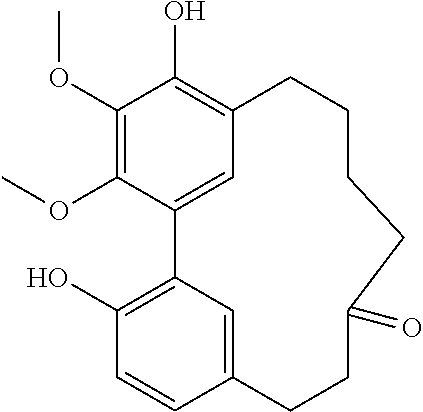

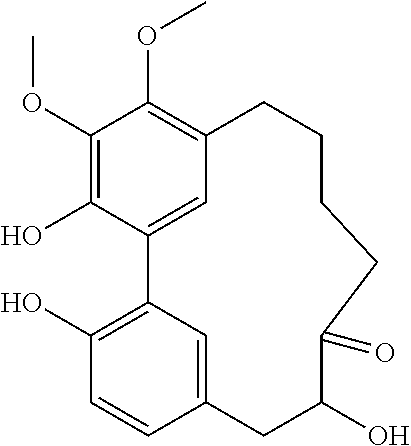
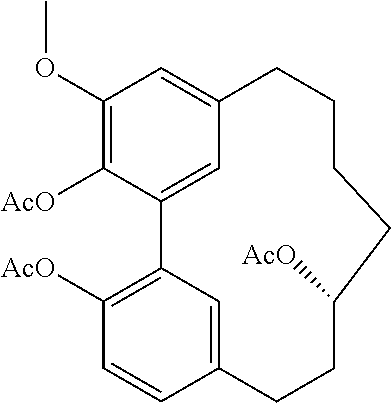

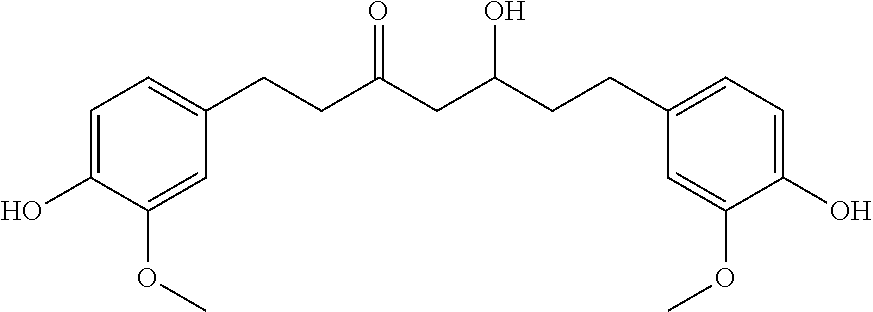



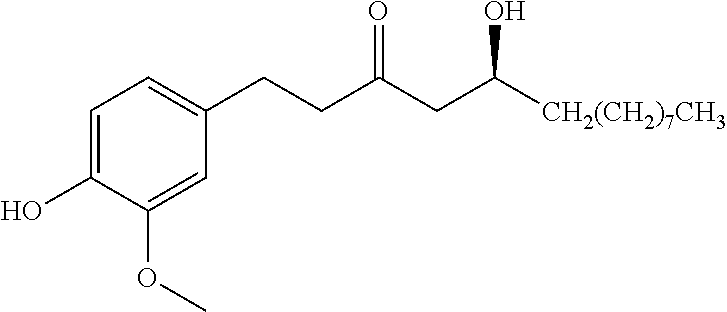
View All Diagrams
| United States Patent | 10,358,405 |
| Dickey , et al. | July 23, 2019 |
Myricanol derivatives and uses thereof for treatment of neurodegenerative diseases
Abstract
The subject invention pertains to myricanol derivatives, therapeutic compositions, and methods for treatment of neurodegenerative diseases, in particular, neurodegenerative diseases associated with abnormal accumulation of protein tau.
| Inventors: | Dickey; Chad (Lutz, FL), Jinwal; Umesh (Tampa, FL), Calcul; Laurent (Tampa, FL), Baker; Bill J. (Tampa, FL), Lebar; Matthew (Boston, MA) | ||||||||||
|---|---|---|---|---|---|---|---|---|---|---|---|
| Applicant: |
|
||||||||||
| Assignee: | UNIVERSITY OF SOUTH FLORIDA
(Tampa, FL) THE UNITED STATES OF AMERICA AS REPRESENTED BY THE DEPARTMENT OF VETERANS AFFAIRS (Washington, DC) |
||||||||||
| Family ID: | 49301109 | ||||||||||
| Appl. No.: | 15/993,232 | ||||||||||
| Filed: | May 30, 2018 |
Prior Publication Data
| Document Identifier | Publication Date | |
|---|---|---|
| US 20180265442 A1 | Sep 20, 2018 | |
Related U.S. Patent Documents
| Application Number | Filing Date | Patent Number | Issue Date | ||
|---|---|---|---|---|---|
| 15414242 | Jan 24, 2017 | ||||
| 14390960 | Mar 21, 2017 | 9598338 | |||
| PCT/US2013/035628 | Apr 8, 2013 | ||||
| 61678409 | Aug 1, 2012 | ||||
| 61621278 | Apr 6, 2012 | ||||
| Current U.S. Class: | 1/1 |
| Current CPC Class: | C07C 43/23 (20130101); A61K 31/121 (20130101); C07C 43/21 (20130101); C07C 47/277 (20130101); C07C 43/215 (20130101); A61P 25/28 (20180101); A61K 31/05 (20130101); A61K 31/11 (20130101); C07C 69/28 (20130101); C07C 2603/40 (20170501); C07C 2603/38 (20170501); C07B 2200/07 (20130101) |
| Current International Class: | A61K 31/05 (20060101); C07C 69/28 (20060101); C07C 47/277 (20060101); C07C 43/23 (20060101); A61K 31/121 (20060101); C07C 43/215 (20060101); C07C 43/21 (20060101); A61K 31/11 (20060101) |
References Cited [Referenced By]
U.S. Patent Documents
| 7355081 | April 2008 | Lee et al. |
| 2018/0037529 | February 2018 | Dickey |
| WO 2012/012798 | Jan 2012 | WO | |||
Other References
|
Kim et al. "Curcuminoids from Curcuma longa L. (Zingiberaceae) that protect PC12 rat pheochromocytoma and normal human umbilical vein endothelial cells from .beta.A(1-42) insult" Neurosci. Lett. 2001, 303, 57-61. (Year: 2001). cited by examiner . International Search Report in International Application No. PCT/US2013/035628, filed Apr. 8, 2013. cited by applicant . Tao, J. et al., Inhibitors of Nitric Oxide Production from the Bark of Myrica rubra: Structures of New Biphenyl Type Diarylheptanoid Glycosides and Taraxerane Type Triterpene, Bioorganic & Medicinal Chemistry, 2002, vol. 10:4005-4012, 2002 Elsevier Science Ltd. cited by applicant . Jones, J. R. et al., The Diarylheptanoid (+)-aR, 11S-Myricanol and Two Flavones from Bayberry (Myrica cerifera) Destabilize the Microtubule Associated Protein Tau, J. Nat. Prod. 2011, 74:38-44, 2011 American Chemical Society and American Society of Pharmacognosy. cited by applicant . Matsuda, H. et al., Bioactive Constituents of Chinese Natural Medicines. VII. .sup.1) Inhibitors of Degranulation in RBL-2H3 Cells and Absolute Stereostructures of Three New Diarylheptanoid Glycosides from the Bark of Myrica rubra, Chem. Pharm. Bull., 2002, 50(2):208-215, 2002 Pharmaceutical Society of Japan. cited by applicant . Ohtsu, H. et al., Antitumor Agents. 217. Curcumin Analogues as Novel Androgen Receptor Antagonists with Potential as Anti-Prostate Cancer Agents, J. Med. Chem., 2002, 45:5037-5042, 2002 American Chemical Society. cited by applicant. |
Primary Examiner: Aguirre; Amanda L
Attorney, Agent or Firm: Saliwanchik, Lloyd & Eisenschenk
Parent Case Text
CROSS-REFERENCE TO RELATED APPLICATIONS
This application is a divisional of U.S. application Ser. No. 15/414,242, filed Jan. 24, 2017; which is a continuation of U.S. application Ser. No. 14/390,960, filed Oct. 6, 2014, now U.S. Pat. No. 9,598,338, issued Mar. 21, 2017; which is the U.S. national stage application of International Patent Application No. PCT/US2013/035628, filed Apr. 8, 2013; which claims the benefit of U.S. provisional application Ser. No. 61/621,278, filed Apr. 6, 2012; and 61/678,409, filed Aug. 1, 2012; which are herein incorporated by reference in their entirety.
Claims
The invention claimed is:
1. A method of reducing intracellular tau levels, wherein said method comprises administering, to cells comprising protein tau, an effective amount of a compound of formula B: ##STR00072## wherein each of R.sub.1-R.sub.4 is, independently, --H or any group that forms an ester or ether bond or a salt thereof; and whereby intracellular tau level is reduced.
2. The method according to claim 1, wherein the compound of formula B is Compound 23: ##STR00073## or a salt thereof.
3. The method according to claim 1, wherein the compound of formula B has the following structure: ##STR00074##
4. The method according to claim 1, wherein the cells are in a subject in need of treatment for a neurodegenerative disease.
5. The method of claim 4, wherein the neurodegenerative disease is a tauopathy.
6. The method of claim 5, wherein the subject is a human.
7. The method of claim 6, wherein the neurodegenerative disease is selected from Alzheimer's disease, Parkinson's disease, frontotemporal dementia, frontotemporal dementia with Parkinsonism, frontotemporal lobe dementia, pallidopontonigral degeneration, progressive supranuclear palsy, multiple system tauopathy, multiple system tauopathy with presenile dementia, Wilhelmsen-Lynch disease, Pick's disease, and Pick's disease-like dementia.
8. The method of claim 7, wherein the neurodegenerative disease is Alzheimer's disease.
Description
BACKGROUND OF THE INVENTION
Intracellular aggregation of abnormal species of phosphorylated tau (protein tau) is a major pathologic feature of a family of neurodegenerative diseases collectively referred to as the tauopathies. Tau normally functions to stabilize microtubules in neurons; however, it pathologically aggregates more than 15 neurodegenerative diseases, including Alzheimer's disease (AD) and Parkinson's disease. The most common tauopathy is Alzheimer's disease, in which paired helical filaments (PHFs) of mis-folded protein tau aggregates in neurofibrillary tangles, in dystrophic neuritis of senile plaques, and in cell processes in the neuropil. Abnormal accumulation of protein tau is closely linked with postsymptomatic progression in Alzheimer's disease. Abnormal accumulation of protein tau in the cytoplasm of neuronal and glial cells also represents major structural hallmarks in the pathology of Pick's disease, corticobasal degeneration, and progressive supranuclear palsy.
At present, researchers on the development of therapeutics for tauopathies focus primarily on agents that prevent abnormal phosphorylation or aggregation of tau proteins. However, it has been discovered that while aggregation of hyperphosphorylated protein tau is visible evidence of tauopathies, these neurofibrillary tangles appear to be less toxic than soluble intermediates of protein tau. High levels of tau intermediates, particularly aberrant tau species failed to be cleared from cells, cause cognitive dysfunction in AD and tauopathies. Therefore, agents that degrade or destabilize tau intermediates, clear aberrant tau species from cells, or otherwise reduce intracellular tau levels, are promising therapeutics for AD and tauopathies.
Existing therapeutics for the treatment tauopathies (such as AD) only demonstrate limited efficacy. Additional therapeutics for the treatment of tauopathies are needed.
BRIEF SUMMARY OF THE INVENTION
The subject invention provides myricanol derivatives for treating neurodegenerative diseases, in particular, neurodegenerative diseases associated with abnormal accumulation of protein tau.
In certain specific embodiments, the subject invention provides myricanol derivatives for treating neurodegenerative diseases, wherein the myricanol derivatives are selected from Compound 22 and Compound 23:
##STR00001##
BRIEF DESCRIPTION OF THE SEQUENCES
SEQ ID NO:1 is an amino acid sequence of a tau protein isoform (tau 352) useful according to the subject invention.
SEQ ID NO:2 is an amino acid sequence of a tau protein isoform (tau 441) useful according to the subject invention.
SEQ ID NO:3 is an amino acid sequence of a tau protein isoform (tau 383) useful according to the subject invention.
SEQ ID NO:4 is an amino acid sequence of a tau protein isoform (tau 758) useful according to the subject invention.
SEQ ID NO:5 is an amino acid sequence of a tau protein isoform (tau 776) useful according to the subject invention.
SEQ ID NO:6 is an amino acid sequence of a tau protein isoform (tau 412) useful according to the subject invention.
DETAILED DESCRIPTION
The subject invention provides myricanol derivatives for treating neurodegenerative diseases, in particular, neurodegenerative diseases associated with abnormal accumulation of protein tau.
Compounds
In certain embodiments, the subject invention provides compounds 1-34, or salts thereof (as shown in Table 1).
TABLE-US-00001 Molecular Compound Structure Weight Name/ sample names Results 1 ##STR00002## 358.4281 Myricanol/ Myr-R-1-G/ BBtol-F/ BBtol-F-E moderate activity 2 ##STR00003## 356.4123 myricanone 3 ##STR00004## 344.4016 Myricananin A 4 ##STR00005## 372.4117 Porson 5 ##STR00006## 454.5122 Myricanol triacetate 6 ##STR00007## 446.4041 4-[5'-(3-carboxypropanoyl)-4,4'- dihydroxy-2',6-dimethoxy[1,1'- biphenyl]-3-yl]-4-oxobutanoic acid 7 ##STR00008## 374.4275 Hexahydrocurcumin 8 ##STR00009## 372.4117 Tetrahydrocurcumin 9 ##STR00010## 338.3539 Demethoxycurcumin active 10 ##STR00011## 308.3279 Bisdemethoxycurcumin active 11 ##STR00012## 350.4923 [10]-Gingerol Active 12 ##STR00013## 322.4391 [8]-Gingerol 13 ##STR00014## 294.3859 [6]-Gingerol 14 ##STR00015## 596.8369 Myricanol 11-monopalmitate/ Myr-R-1-E 15 ##STR00016## 833.2729 Myricanol 11,17-dipalmitate/ Myr-R-3-E-4 16 ##STR00017## 596.8369 myricanol 17-palmitate/ Myr-R-3-F 17 ##STR00018## 596.8369 myricanol 5-palmitate/ Myr-R-3-E-2 18 ##STR00019## 340.4129 Myricacene A (trans)/ Myr-R-9-4; Myr-16-13-4 active 19 ##STR00020## 340.4129 Myricacene B (trans)/ Myr-R-9-2-8; Myr-R-16-15 active 20 ##STR00021## 576.8488 Myricacene B (trans) 5-palmitate/ Myr-R20-2 21 ##STR00022## 340.4129 Myricacene A (cis)/ Myr-R-9-2-4; Myr-R-16-13-2 moderately active 22 ##STR00023## 340.4129 Myricacene B (cis)/ Myr-R-9-2-6 active 23 ##STR00024## 340.4129 Myr-R-16-6 very active 24 ##STR00025## 340.4129 Myr-R-16-4-2 active 25 ##STR00026## 344.4016 Myr-R-21-4-2 26 ##STR00027## 344.4016 Myr-R-21-4-4 27 ##STR00028## 330.3750 Myr-R-21-2 28 ##STR00029## 372.4117 Myr-R-25-2/ Myr-R-26-2 29 ##STR00030## 464.5485 Myr-R-25-8 30 ##STR00031## 372.4117 Myr-R-27-2 31 ##STR00032## 386.4813 Dimethylmyricanol/ Myr-R-31 32 ##STR00033## 400.5079 Trimethylmyricanol/ Myr-R-33-4 33 ##STR00034## 368.4660 Dimethylmyricacene/ Myr-R-32-2 34 ##STR00035## 312.3597 Myr-R30-2
In certain embodiments, the subject invention pertains to the uses of Compound 9, Compound 10, Compound 11, Compound 18, Compound 19, Compound 21, Compound 22, Compound 23, and Compound 24, and salts thereof, for treating neurodegenerative diseases, in particular, neurodegenerative diseases associated with abnormal accumulation of protein tau.
In certain specific embodiments, the subject invention pertains to the uses of compounds 22 and 23, or salts thereof, for treating neurodegenerative diseases, in particular, neurodegenerative diseases associated with abnormal accumulation of protein tau.
In one embodiment, the subject invention provides an isolated or substantially pure compound of formula A, or a salt thereof,
##STR00036##
wherein R.sub.1-R.sub.4 are, independently, --H or any group that forms an ester or ether bond.
In one embodiment, the subject invention provides an isolated or substantially pure compound of formula B, or a salt thereof,
##STR00037##
wherein R.sub.1-R.sub.4 are, independently, --H or any group that forms an ester or ether bond.
In one embodiment, the subject invention provides an isolated or substantially pure compound of formula C, or a salt thereof,
##STR00038##
wherein R.sub.1-R.sub.4 are, independently, --H or any group that forms an ester or ether bond.
In one embodiment, the subject invention provides an isolated or substantially pure compound of formula D, or a salt thereof,
##STR00039##
wherein R.sub.1-R.sub.4 are, independently, --H or any group that forms an ester or ether bond.
In one embodiment, the subject invention provides an isolated or substantially pure compound of formula E, or a salt thereof,
##STR00040##
wherein R.sub.1-R.sub.8 are, independently, --H or any group that forms an ester or ether bond.
In one embodiment, the subject invention provides an isolated or substantially pure compound of formula F, or a salt thereof,
##STR00041##
wherein R.sub.1-R.sub.4 are, independently, --H or any group that forms an ester or ether bond.
In one embodiment, the subject invention provides an isolated or substantially pure compound of formula G, or a salt thereof,
##STR00042##
wherein R.sub.1-R.sub.3 are, independently, --H or any group that forms an ester or ether bond.
In one embodiment, the subject invention provides an isolated or substantially pure compound of formula H, or a salt thereof,
##STR00043##
wherein R.sub.1 and R.sub.2 are, independently, --H or any group that forms an ester or ether bond.
In one embodiment, the subject invention provides an isolated or substantially pure compound of formula I, or a salt thereof,
##STR00044##
wherein R.sub.1-R.sub.3 are, independently, --H or any group that forms an ester or ether bond.
In one embodiment, the subject invention provides an isolated or substantially pure compound of formula J, or a salt thereof,
##STR00045##
wherein R.sub.1-R.sub.4 are, independently, --H or any group that forms an ester or ether bond.
In one embodiment, the subject invention provides an isolated or substantially pure compound of formula K, or a salt thereof,
##STR00046##
wherein R.sub.1-R.sub.4 are, independently, --H or any group that forms an ester or ether bond.
In one embodiment, the subject invention provides an isolated or substantially pure compound of formula L, or a salt thereof,
##STR00047##
wherein R.sub.1-R.sub.4 are, independently, --H or any group that forms an ester or ether bond.
In certain embodiments, one or more of R.sub.1-R.sub.8 of formula A or formula L can be, --H, unsubstituted or substituted alkyl, alkenyl, --COOH, acyl, benzyl, or cyclic alkyl. In certain embodiments, any or all of R.sub.1-R.sub.8 have fewer than 6 carbon atoms.
In certain embodiments, one or more of R.sub.1-R.sub.8 of formula A or formula L can be an organic or inorganic acid group including, but not limited to, acetic acid, carboxylic acid, aspartic acid, formic acid, citric acid, benzoic acid, hippuric acid, malic acid, mucic acid, phosphoric acid, sulfuric acid, gluconic acid, maleic acid, succinic acid, tartaric acid, and lactic acid.
In certain embodiments, one or more of R.sub.1-R.sub.8 of formula A or formula L can be a carbohydrate moiety, in which a monosaccharide, disaccharide, oligosaccharide, or its derivative loses an --H in its hydroxyl group and thereby forms a radical. Suitable carbohydrate moieties can be derived, for example, from glucose, fructose, and sucrose.
The compounds of the present invention can be synthesized. In preferred embodiments, the compounds of the present invention are at least 75% pure, preferably at least 90% pure, more preferably are more than 95% pure, and most preferably are more than 99% pure (substantially pure).
As used herein, "isolated" refers to compounds that have been removed from any environment in which they may exist in nature.
The present invention further embodies stereoisomers of the compounds of formula A or formula L. The term "stereoisomer" encompasses all enantiomerically/stereomerically pure and enantiomerically/stereomerically enriched compounds disclosed herein.
The enantiomeric forms of the compounds (e.g., isolated or chemically synthesized) of the invention are substantially free from one another (i.e., in enantiomeric excess). In other words, the "+" forms of the compounds are substantially free from the "-" forms of the compounds. Conversely, "-" forms of the compounds are substantially free of "+" forms of the compounds. In one embodiment of the invention, the enantiomeric compounds are in at least about 80% of the "+" forms. In a preferred embodiment, the compounds are in at least about 90% of the "+" forms. In a more preferred embodiment, the compounds are in at least about 95% of the "+" forms. In an even more preferred embodiment, the compounds are in at least about 97.5% of the "+" forms. In a most preferred embodiment, the compounds are in at least about 99% of the "+" forms.
"Alkyl" means a linear saturated monovalent radical of one to sixteen carbon atoms or a branched saturated monovalent of three to sixteen carbon atoms. It may include hydrocarbon radicals of one to four or one to three carbon atoms, which may be linear. Examples include methyl, ethyl, propyl, 2-propyl, n-butyl, iso-butyl, tert-butyl, pentyl, and the like.
"Alkenyl" means a linear or branched C.sub.2-C.sub.16 hydrocarbon radical that comprises one or more carbon-carbon double bonds. Examples include propylenyl, buten-1-yl, isobutenyl, penten-1-yl, 2,2-methylbuten-1-yl, 3-methylbuten-1-yl, hexan-1-yl, hepten-1-yl, octen-1-yl, and the like.
"Acyl" means a radical --C(O)R where R is hydrogen, alkyl or cycloalkyl, or heterocycloalkyl. Examples include formyl, acetyl, ethylcarbonyl, and the like.
"Carboxyl" means the radical --C(O)OH.
"Halo" means fluoro, chloro, bromo or iodo.
"Haloalkyl" means alkyl substituted with one or more same or different halo atoms, e.g., --CH.sub.2Cl, --CH.sub.2Br, --CF.sub.3, --CH.sub.2CH.sub.2Cl, --CH.sub.2CCl.sub.3, and the like.
"Hydroxy" means the radical --OH.
"Hydroxyalkyl" means an alkyl radical as defined herein, substituted with one or more, preferably one, two or three hydroxy groups. Representative examples include, but are not limited to, hydroxymethyl, 2-hydroxyethyl, 2-hydroxypropyl, 3-hydroxypropyl, 1-(hydroxymethyl)-2-methylpropyl, 2-hydroxybutyl, 3-hydroxybutyl, 4-hydroxybutyl, 2,3-dihydroxypropyl, 2-hydroxy-1-hydroxymethylethyl, 2,3-dihydroxybutyl, 3,4-dihydroxybutyl and 2-(hydroxymethyl)-3-hydroxy-propyl, preferably 2-hydroxyethyl, 2,3-dihydroxypropyl and 1-(hydroxymethyl) 2-hydroxyethyl.
"Substituted," as used herein, refers to a compound or chemical moiety in which at least one hydrogen atom of that compound or chemical moiety is replaced with a second chemical moiety. In certain embodiments, substituents include, but are not limited to, halogen; alkyl; heteroalkyl; alkenyl; alkynyl; hydroxyl, aryl, hydroxyalkyl, heteroaryl, hydroxy; alkoxyl; amino; nitro; thiol; carbocyclic cycloalkyl, amino (primary, secondary or tertiary); o-lower alkyl; o-aryl, aryl; aryl-lower alkyl.
In one embodiment, the subject invention pertains to the therapeutic use of Compound 22, Compound 23, and Compound 24:
##STR00048##
In one embodiment, the subject invention pertains to the therapeutic use of the following isomer of Compound 23:
##STR00049## Treatment of Neurodegenerative Diseases
The compounds and compositions of the subject invention, through administration to a subject, are useful for treating or ameliorating neurodegenerative diseases or conditions, in particular, neurodegenerative diseases or conditions associated with abnormally high levels of protein tau and/or abnormal accumulation of protein tau in neurons. In a preferred embodiment, the compounds and compositions of the subject invention are useful to treat or ameliorate Alzheimer's disease or Parkinson's disease.
In one embodiment, the subject invention provides a method for treating a neurodegenerative disease or condition, particularly a disease or condition associated with abnormally high levels of protein tau and/or abnormal accumulation of protein tau in neurons, wherein the method comprises administering, to a subject in need of such treatment, an effective amount of a composition comprising a compound selected from Compound 9, Compound 10, Compound 11, Compound 18, Compound 19, Compound 21, Compound 22, Compound 23, and Compound 24, or a salt thereof.
In one embodiment, the subject invention provides a method for treating a neurodegenerative disease or condition, particularly a disease or condition associated with abnormally high levels of protein tau and/or abnormal accumulation of protein tau in neurons, wherein the method comprises administering, to a subject in need of such treatment, an effective amount of a composition comprising a compound selected from any of formula A or formula L, or a salt thereof.
In one embodiment, the subject invention provides a method of reducing intracellular tau levels, wherein said method comprises administering, to cells comprising protein tau, an effective amount of a compound of formula A to formula L.
In one embodiment, the following isomer of Compound 23 is administered to a subject having a neurodegenerative disease or condition, particularly a disease or condition associated with abnormally high levels of protein tau and/or abnormal accumulation of protein tau in neurons,
##STR00050##
The term "subject," as used herein, describes an organism, including mammals such as primates, to which treatment with the compositions according to the subject invention can be administered. Mammalian species that can benefit from the disclosed methods of treatment include, but are not limited to, apes, chimpanzees, orangutans, humans, monkeys; and other animals such as dogs, cats, horses, cattle, pigs, sheep, goats, chickens, mice, rats, guinea pigs, and hamsters. Typically, the subject is a human.
The term "tau protein" or any grammatical variation thereof (e.g., protein tau and tau etc.), as used herein, refers generally to any protein of the microtubule-associated tau protein family. Members of the tau family share the common features of a characteristic N-terminal segment, sequences of approximately 50 amino acids inserted in the N-terminal segment, a characteristic tandem repeat region consisting of 3 or 4 tandem repeats of 31-32 amino acids, and a C-terminal tail. Tau proteins of the subject invention may be in a form of soluble tau intermediates, functional, aberrant, abnormally-truncated, mis-folded or mis-processed tau, and phosphorylated tau.
Preferably, tau protein of the subject invention is of mammalian origin, more preferably, of human origin. Specifically, tau proteins of the subject invention include microtubule-associated protein translated from the human chromosomal sequence of GenBank Accession No. AH005895 and naturally-occurring mammalian variants or isoforms thereof. Six human brain tau isoforms are currently known, including tau352 (GenBank Accession No. NP_058525) (SEQ ID NO:1), tau441 (GenBank Accession No. NP_005901) (SEQ ID NO:2), tau383 (GenBank Accession No. NP_058518) (SEQ ID NO:3), tau758 (GenBank Accession No. NP_058519) (SEQ ID NO:4), tau776 (GenBank Accession No. NP_001116538) (SEQ ID NO:5), and tau412 (GenBank Accession No. NP_001116539) (SEQ ID NO:6).
The term "treatment" or any grammatical variation thereof (e.g., treat, treating and treatment etc.), as used herein, includes but is not limited to, ameliorating or alleviating a symptom of a disease or condition, reducing, suppressing, inhibiting, lessening, or affecting the progression, severity, and/or scope of a condition, chance of re-occurrence or returning of a disease after a remission. For instance, the term "treatment" includes (i) ameliorating a symptom associated with a neurodegenerative disease in a patient diagnosed with the neurodegenerative disease; and/or (ii) relieving (such as attenuating the progress of) or remedying a neurodegenerative disease in a patient diagnosed with the neurodegenerative disease.
In one embodiment, the treatment method of the subject invention reduces tau levels and/or improves tau clearance. Normal, functional tau is less affected by clearance pathways in the cell than aberrant tau. In one embodiment, the treatment method of the subject invention modulates tau clearance by selectively targeting abnormal tau.
In an embodiment, the subject invention provides a method for treating or ameliorating a neurodegenerative disease or condition. The method comprises administering, to a subject in need of such treatment, an effective amount of compounds and compositions of the subject invention.
In an embodiment, the therapeutic composition is administered to a human subject who has symptoms of, or is diagnosed with, a neurodegenerative disease. In preferred embodiments, the therapeutic composition is administered to a human subject who has symptoms of, or is diagnosed with, a neurodegenerative disease associated with abnormal accumulation of protein tau. For instance, the therapeutic composition is administered to a human subject who has elevated levels of soluble protein tau and/or hyperphosphorylated protein tau in the nervous system, such as in the brain or cytoplasm of neuronal and glial cells. In addition, the therapeutic composition is administered to a human subject who exhibits pathologic features such as neurofibrillary tangles or senile plaques in neuronal cells and/or cell processes. In a specific embodiment, the therapeutic composition is administered to a human subject who has symptoms of, or is diagnosed with, Alzheimer's disease.
The identification of subjects who are in need of treatment for a neurodegenerative disease is well within the knowledge and ability of one skilled in the art. By way of example, a clinician skilled in the art can readily identify, by the use of clinical tests, neurologic and physical examination, and medical/family history, those patients who are suffering from a neurodegenerative disease as well as those who are predisposed to developing a neurodegenerative disease and thus readily determine if an individual is in need of treatment of the subject invention. For instance, neurofibrillary tangles or senile plaques present in neuronal cells and/or cell processes can be determined using electron microscopy (EM) or other clinical techniques known in the art. In addition, spinal fluid or cerebral fluid samples or tissues samples from hippocampal tissue or frontal cortex tissue samples may be obtained from a subject and levels of protein tau present in the samples can be determined using routine techniques such as enzyme-linked immunosorbant assay (ELISA), western blot, and immunological assays.
The term "effective amount" or "therapeutically effective amount," as used herein, refers to an amount that is capable of preventing, treating or ameliorating a disease or condition or otherwise capable of producing an intended therapeutic effect. For instance, the effective amount of the compounds and compositions of the subject invention is an amount capable of reducing levels of protein tau in a subject. In certain embodiments, the effective amount enables a 5%, 25%, 50%, 75%, 90%, 95%, 99% and 100% reduction of levels of protein tau (e.g. soluble protein tau intermediates and/or aberrant protein tau) in a subject.
The compounds and compositions of the subject invention can be used to treat or ameliorate neurodegenerative diseases including, but not limited to, Alzheimer's disease, Parkinson's disease, Amyotrophic lateral sclerosis (ALS), Huntington's disease, multiple sclerosis, Pick's disease, fronto temporal dementia, cortico-basal degeneration, progressive supranuclear palsy, Creutzfeldt-Jakob disease, Gerstmann-Straussler-Scheinker syndrome, and Kuru.
The compounds and compositions of the subject invention can also be used to treat or ameliorate neurodegenerative diseases including, but not limited to, Down's syndrome, Argyrophilic grain disease, parkinsonism dementia complex of Guam, non-Guamanian motor neurone disease with NFT, Niemann-Pick disease type C, subacute sclerosing panencephalitis, postencephalitic parkinsonism, dementia pugilistica, myotonic dystrophy, prion protein amyloid antipathy, and Hallervorden-Spatz disease.
The compounds and compositions of the subject invention are particularly useful to treat or ameliorate a neurodegenerative disease involving tau pathologies (i.e., tauopathies) including, but not limited to, Alzheimer's disease, Parkinson's disease, frontotemporal dementia, frontotemporal dementia with Parkinsonism, frontotemporal lobe dementia, pallidopontonigral degeneration, progressive supranuclear palsy, multiple system tauopathy, multiple system tauopathy with presenile dementia, Wilhelmsen-Lynch disease, Pick's disease, and Pick's disease-like dementia.
Specifically, the compounds and compositions of the subject invention are particularly useful to treat or ameliorate a disease or condition arising, at least in part, from abnormally high levels of protein tau in the nervous system, such as in cytoplasm of neuronal and glial cells and in neuronal and glial cell processes. Thus, the subject invention is particularly useful for treatment of neurodegenerative diseases and disorders, in which reduction of levels of protein tau in the nervous system would be beneficial.
In addition, the compounds and compositions of the subject invention are useful for alleviating or attenuating symptoms arising from or associated with neurodegenerative diseases, including cognitive dysfunction, impaired memory, impaired mental capacities, emotional disturbances, speech dysfunction, incontinence, tremor, postural instability, rigidity or stiff movement, muscle paralysis, and pain.
Therapeutic Compositions and Formulations
The subject invention further provides therapeutic compositions that contain a therapeutically effective amount of the compounds and compositions and a pharmaceutically acceptable carrier or adjuvant.
The terms "pharmaceutically acceptable", "physiologically tolerable" and grammatical variations thereof, as used herein, include compositions, carriers, diluents and reagents, are used interchangeably, and represent that the materials are capable of administration to or upon a subject such as mammal.
The term "carrier" refers to an adjuvant, excipient, or vehicle with which the compound is administered. Such pharmaceutical carriers can be sterile liquids, such as water and oils, including those of petroleum oil such as mineral oil, vegetable oil such as peanut oil, soybean oil, and sesame oil, animal oil, or oil of synthetic origin. Particularly preferred pharmaceutical carriers for treatment of or amelioration of a neurodegenerative disease are carriers that can penetrate the blood/brain barrier.
Suitable carriers also include ethanol, dimethyl sulfoxide, glycerol, silica, alumina, starch, sorbitol, inosital, xylitol, D-xylose, mannitol, powdered cellulose, microcrystalline cellulose, talc, colloidal silicon dioxide, calcium carbonate, calcium phosphate, calcium aluminium silicate, aluminium hydroxide, sodium starch phosphate, lecithin, and equivalent carriers and diluents. Saline solutions and aqueous dextrose and glycerol solutions can also be employed as liquid carriers, particularly for injectable solutions.
Suitable pharmaceutical excipients include starch, glucose, lactose, sucrose, gelatin, malt, rice, flour, chalk, silica gel, sodium stearate, glycerol monostearate, talc, sodium chloride, dried skim milk, glycerol, propylene, glycol, water, ethanol and the like. The therapeutic composition, if desired, can also contain minor amounts of wetting or emulsifying agents, or pH buffering agents.
The amount of active ingredient that may be combined with the carrier materials to produce a single dosage form will vary, depending on the type of the condition and the subject to be treated. In general, a therapeutic composition contains from about 5% to about 95% active ingredient (w/w). More specifically, a therapeutic composition contains from about 20% (w/w) to about 80% or about 30% to about 70% active ingredient (w/w).
The compounds and compositions of the subject invention can be formulated according to known methods for preparing pharmaceutically useful compositions. Formulations are described in detail in a number of sources which are well known and readily available to those skilled in the art. For example, Remington's Pharmaceutical Science by E. W. Martin describes formulations which can be used in connection with the subject invention. In general, the compositions of the subject invention will be formulated such that an effective amount of the bioactive compound(s) is combined with a suitable carrier in order to facilitate effective administration of the composition.
The therapeutic or pharmaceutical compositions of the subject invention can also be formulated as neutral or salt forms. Pharmaceutically acceptable salts include those formed with free amino groups such as those derived from hydrochloric, phosphoric, acetic, oxalic, tartaric acids, etc., and those formed with free carboxyl groups such as those derived from sodium, potassium, ammonium, calcium, ferric hydroxides, isopropylamine, triethylamine, 2-ethylamino ethanol, histidine, procaine, etc.
The preparation of a pharmacological composition that contains active ingredients dissolved or dispersed therein is well understood in the art and need not be limited based on formulation. Typically such compositions are prepared as injectables either as liquid solutions or suspensions; however, solid forms suitable for solution, or suspensions, in liquid prior to use also can be prepared. The preparation also can be emulsified, such as oil-in-water emulsion.
The compounds and compositions of the subject invention in prescription amounts can be readily made into any form of drug, suitable for administering to humans or animals. Suitable forms include, for example, tinctures, decoctions, and dry extracts. These can be taken orally, applied through venous injection mucous membranes or inhalation. The active ingredient can also be formulated into capsules, powder, pallets, pastille, suppositories, oral solutions, pasteurized gastroenteric suspension injections, small or large amounts of injection, frozen powder injections, pasteurized powder injections and the like.
Routes of Administration
The compounds and compositions of the subject invention can be administered to the subject being treated by standard routes, including oral, inhalation, or parenteral administration including intravenous, subcutaneous, topical, transdermal, intradermal, transmucosal, intraperitoneal, intramuscular, intracapsular, intraorbital, intracardiac, transtracheal, subcutaneous, subcuticular, intraarticular, subcapsular, subarachnoid, intraspinal, epidural and intrasternal injection, infusion, and electroporation, as well as co-administration as a component of any medical device or object to be inserted (temporarily or permanently) into a subject. In a preferred embodiment, the compounds and compositions of the subject invention are administered orally.
The amount of the therapeutic or pharmaceutical composition of the subject invention which is effective in the treatment of a neurodegenerative disease will depend on the nature of the disease, condition or disorder and can be determined by standard clinical techniques. Illustratively, dosage levels of the administered active ingredients can be: intravenous, 0.01 to about 20 mg/kg; intraperitoneal, 0.01 to about 100 mg/kg; subcutaneous, 0.01 to about 100 mg/kg; intramuscular, 0.01 to about 100 mg/kg; orally 0.01 to about 200 mg/kg and preferably about 1 to 100 mg/kg; intranasal instillation, 0.01 to about 20 mg/kg; and aerosol, 0.01 to about 20 mg/kg of animal (body) weight.
Once improvement of the patient's condition has occurred, a maintenance dose is administered if necessary. Subsequently, the dosage or the frequency of administration, or both, may be reduced as a function of the symptoms to a level at which the improved condition is retained. When the symptoms have been alleviated to the desired level, treatment should cease. Patients may however require intermittent treatment on a long-term basis upon any recurrence of disease symptoms.
In addition, in vitro assays may optionally be employed to help identify optimal dosage ranges. The precise dose to be employed in the formulation will also depend on the route of administration, and the seriousness of the disease, condition or disorder, and should be decided according to the judgment of the practitioner and each patient's circumstances. Effective doses may be extrapolated from dose-response curves derived from in vitro or animal model test systems.
EXAMPLE
Following is an example that illustrates procedures for practicing the invention. The example should not be construed as limiting.
Example 1--Myricanol Derivatives and Uses Thereof for Reducing Tau Protein Levels
This Example shows myricanol derivatives, their synthetic schemes, and uses for reducing protein tau levels.
(+)-aR,11S-Myricanol Extraction from Bayberry Root Bark Myrica cerifera (Natural Frontier Co-Op)
Tau-reducing-guided fractionation study of Myrica cerifera (bay berry root bark) led to the identification (+)-aR,11S-myricanol as a tau destabilizer agent with an IC.sub.50 of 35 .mu.M. The bayberry root-bark powder (5.times.1 kg) was extracted with 5.times.2 L of toluene under agitation in a (5.times.) flask protected from light (3.times.24 h). The filtrate was concentrated and gave 58 g of extract. The toluene extract was purified using silica gel MPLC, eluting with a gradient of 0 to 40% ethyl acetate/hexanes to yield 27 g of (+)-aR,11S-myricanol [.alpha.].sub.D.sup.21=48.2 (c=1.1, Chloroform).
Derivatization
Oxidation
Myricanol (120 mg) was treated in a solution of dichloromethane (10 mL) with 150 mg of pyridinium chlorochromate (PCC). After 2 h the reaction was treated into ice-water and EtOAc extraction. The organic layer was then extracted with saturated aqueous NaHCO.sub.3 and brine, then dried over MgSO.sub.4 powder and filtered. The residue was then purified by normal phase HPLC using an isocratic solvent mixture of 20% ethyl acetate and 80% hexane to give 20 mg of myricanone.
##STR00051## Dehydration
Myricanol (50 mg) was treated in a solution of 10 mL of toluene with 79 mg of para toluene sulfonic acid. The solution was boiled for 24 h, cooled, diluted with hexane, washed successively with saturated solutions of NaHCO.sub.3 and NaCl, dried over MgSO.sub.4, and evaporated. The mixture was purified by a first HPLC using normal phase column in an isocratic solvent mixture of 3% ethyl acetate/hexane. Two fractions were collected. The first eluted fraction was purified by reversed phase HPLC using an isocratic solvent mixture of 32% acetonitrile/water to give 5 mg of pure myricacene A (trans) material and 0.5 mg of myricacene A (cis) and 2 mg of myricacene B (trans). The second fraction was separated using the same reverse phase condition and provided 21 mg and 8 mg of the respective 6-membered-ring and 5-membered ring derivatives [.alpha.].sub.D.sup.21=0 (c=0.1, Chloroform).
When para toluene sulfonic acid was added at catalytic level (0.3 mg, during 72 hours) after normal and reverse phase HPLC purification: 15 mg of myricacene A (trans), 9 mg of myricacene A (trans), 4 mg of myricacene A (cis), 4 mg of myricacene B (cis), 3 mg of the 6-membered ring derivative and 3 mg of the 5-membered ring derivative.
##STR00052##
Each of the 6-membered ring and the 5-membered ring derivatives (shown above) have four possible isomers by the chiral center at position C10 and C12, respectively, and the biphenyl orientation.
During the purification process, the 6-membered ring provided crystal and the X-ray crystallographic analysis provided the relative configuration below:
##STR00053## Methylation
1) Sodium hydride (4 mg) was added to a solution of myricanol (20 mg) in methyl iodide (1 ml) and dimethylacetamide (DMA, 5 ml) at 0.degree. C. for 30 min. The reaction mixture was kept for 4 h at 0.degree. C. then diluted with water and extracted with diethyl ether. The ether extract was washed with water and brine, and was dried over sodium sulfate, filtered and evaporated. The residue was separated by normal phase HPLC using 45% ethyl acetate and 55% hexane and provided 8 mg of trimethyl myricanol and 5 mg of dimethylmyricanol.
##STR00054##
2) 10 mg of myricacene A (trans) was methylated using the same reaction condition and treatment process as the previous reaction. After normal phase HPLC using 25% ethyl acetate and 75% hexane the reaction gave 5 mg of dimethylmyricanone A (trans).
##STR00055## Demethylation
10 mg of myricanol was mixed to 5 mL of dichloromethane (3 mL) then the resulting solution was added to solution of 5 mL dichloromethane and 0.2 mL BBr.sub.3 at -10.degree. C. and stirred under nitrogen for 1 h to room temperature. The reaction mixture was diluted with water, stirred and extracted with chloroform. The chloroform extract was washed with brine, dried over magnesium sulfate, filtered and evaporated to give after reverse phase HPLC (65% water and 35% acetonitrile) 2 mg of 3-hydroxy-myricanol, 3 mg of 4-hydroxy-miricanol and 1 mg of 3,4-dihydroxy-myricanol.
##STR00056## Ozonolysis
1) 3 mg of myricacene A (trans) was added to 5 mL of dichloromethane (3 mL) then under an ozone generator during 30 min. The reaction mixture was then treated by dimethyl sulfide for 1 h. The reaction mixture was evaporated and provided 1 mg of dialdehyde A.
##STR00057##
2) The same condition as the previous reaction was applied to 3 mg of myricacene B (trans) and gave 0.5 mg dialdehyde A.
##STR00058## Esterification
1) Myricanol (100 mg) was treated with a solution of acetone and palmitoyl chloride (127 .mu.L) with potassium carbonate (193 mg) at room temperature for 15 h. The mixture was then concentrated in Vacuo and fractionated on a silica gel column using MPLC (silica cartridge, Isco Combiflash) with a linear gradient of 0-30% ethyl acetate/hexanes.
The major compound eluted was myricanol 11-monopalmitate (21 mg) with an optical rotation of [.alpha.].sub.D.sup.21=44.6 (c=0.9, Chloroform).
##STR00059##
2) Myricanol (100 mg) was added to a solution of pyridine (5 ml) and chloroform (3 mL) with palmitic anhydride (500 mg) at room temperature for 48 h. The mixture was then concentrated in vacuo and fractionated on a silica gel column using MPLC (silica cartridge, Isco Combiflash) with a linear gradient of 0-30% hexane/ethyl Acetate. The major compound eluted was myricanol 17-palmitate Myricanol 5,17-dipalmitate, myricanol 17-palmitate and myricanol 5-palmitate: (+)-S-(60 mg). Myricanol 5-palmitate and myricanol 11,17-dipalmitate were purified using semi-preparative column for normal phase HPLC with a gradient of 0 to 20% Ethyl acetate hexane providing respectively 4 and 6 mg.
##STR00060##
3) Myricacene B (E) (10 mg) was added to a solution of pyridine (5 ml) and chloroform (3 mL) with palmitic anhydride (50 mg) at room temperature for 48 h. The mixture was then concentrated in Vacuo and fractionated on a silica gel column using HPLC a linear gradient of 0-30% Hexane/Ethyl Acetate. The major compound eluted was myricacene B (trans) 5 palmitate,
##STR00061## Etherification
The 6-membered-ring derivative (5 mg) and 1 mg of 18-crown-6 were added to a solution of acetonitrile and 1-bromohexadecane (50 .mu.L) with potassium carbonate (193 mg) at room temperature for 24 h. The mixture was diluted with water and diethyl ether, washed with brine. The organic layer was dried over MgSO.sub.4, filtered and evaporated. The residue was separated on gradient HPLC (0-30% Ethyl acetate in hexane) to afford 2 mg of dihexadecacyloxy 6-membered ring derivative.
##STR00062##
To assess the effects of the aqueous bayberry extract on overexpressed and endogenous tau levels, HeLa cells stably transfected with tau were treated with the myricanol derivatives.
TABLE-US-00002 Molecular Compound Structure Weight Name/ sample names Results 9 ##STR00063## 338.3539 Demethoxycurcumin active 10 ##STR00064## 308.3279 Bisdemethoxycurcumin active 11 ##STR00065## 350.4923 [10]-Gingerol active 18 ##STR00066## 340.4129 Myricacene A (trans)/ Myr-R-9-4; Myr-16-13-4 active 19 ##STR00067## 340.4129 Myricacene B (trans)/ Myr-R-9-2-8; Myr-R-16-15 active 21 ##STR00068## 340.4129 Myricacene A (cis)/ Myr-R-9-2-4; Myr-R-16-13-2 moderately active 22 ##STR00069## 340.4129 Myricacene B (cis)/ Myr-R-9-2-6 active 23 ##STR00070## 340.4129 Myr-R-16-6 very active 24 ##STR00071## 340.4129 Myr-R-16-4-2 active
The results show that myricanol derivatives myricacene B (cis) (Compound 22) and the 6-membered ring (Compound 23) potently reduce levels of tau proteins, and thus, can be used to treat tauopathies such as Alzheimer's disease.
Time-dependent bioassay revealed that the 6-membered-ring derivative (Compound 23) potently reduces protein tau levels upon treatment of HeLa cells for 24 hours. Dose-dependent bioassay revealed that myricacene B (cis) (Compound 22) is a potent tau-reducing compound at a concentration of 20 .mu.g/mL. The active synthesized compounds exhibit low toxicity and do not alter the amount of glyceraldehyde 3-phosphate dehydrogenase (GADPH) levels (they also showed an IC.sub.50 against A549>10 .mu.g/mL).
It should be understood that the examples and embodiments described herein are for illustrative purposes only and that various modifications or changes in light thereof will be suggested to persons skilled in the art and are to be included within the spirit and purview of this application and the scope of the appended claims. In addition, any elements or limitations of any invention or embodiment thereof disclosed herein can be combined with any and/or all other elements or limitations (individually or in any combination) or any other invention or embodiment thereof disclosed herein, and all such combinations are contemplated with the scope of the invention without limitation thereto.
All patents, patent applications, provisional applications, and publications referred to or cited herein are incorporated by reference in their entirety, including all figures and Tables, to the extent they are not inconsistent with the explicit teachings of this specification.
SEQUENCE LISTINGS
1
61352PRTHomo sapiens 1Met Ala Glu Pro Arg Gln Glu Phe Glu Val Met Glu Asp His Ala Gly1 5 10 15Thr Tyr Gly Leu Gly Asp Arg Lys Asp Gln Gly Gly Tyr Thr Met His 20 25 30Gln Asp Gln Glu Gly Asp Thr Asp Ala Gly Leu Lys Ala Glu Glu Ala 35 40 45Gly Ile Gly Asp Thr Pro Ser Leu Glu Asp Glu Ala Ala Gly His Val 50 55 60Thr Gln Ala Arg Met Val Ser Lys Ser Lys Asp Gly Thr Gly Ser Asp65 70 75 80Asp Lys Lys Ala Lys Gly Ala Asp Gly Lys Thr Lys Ile Ala Thr Pro 85 90 95Arg Gly Ala Ala Pro Pro Gly Gln Lys Gly Gln Ala Asn Ala Thr Arg 100 105 110Ile Pro Ala Lys Thr Pro Pro Ala Pro Lys Thr Pro Pro Ser Ser Gly 115 120 125Glu Pro Pro Lys Ser Gly Asp Arg Ser Gly Tyr Ser Ser Pro Gly Ser 130 135 140Pro Gly Thr Pro Gly Ser Arg Ser Arg Thr Pro Ser Leu Pro Thr Pro145 150 155 160Pro Thr Arg Glu Pro Lys Lys Val Ala Val Val Arg Thr Pro Pro Lys 165 170 175Ser Pro Ser Ser Ala Lys Ser Arg Leu Gln Thr Ala Pro Val Pro Met 180 185 190Pro Asp Leu Lys Asn Val Lys Ser Lys Ile Gly Ser Thr Glu Asn Leu 195 200 205Lys His Gln Pro Gly Gly Gly Lys Val Gln Ile Val Tyr Lys Pro Val 210 215 220Asp Leu Ser Lys Val Thr Ser Lys Cys Gly Ser Leu Gly Asn Ile His225 230 235 240His Lys Pro Gly Gly Gly Gln Val Glu Val Lys Ser Glu Lys Leu Asp 245 250 255Phe Lys Asp Arg Val Gln Ser Lys Ile Gly Ser Leu Asp Asn Ile Thr 260 265 270His Val Pro Gly Gly Gly Asn Lys Lys Ile Glu Thr His Lys Leu Thr 275 280 285Phe Arg Glu Asn Ala Lys Ala Lys Thr Asp His Gly Ala Glu Ile Val 290 295 300Tyr Lys Ser Pro Val Val Ser Gly Asp Thr Ser Pro Arg His Leu Ser305 310 315 320Asn Val Ser Ser Thr Gly Ser Ile Asp Met Val Asp Ser Pro Gln Leu 325 330 335Ala Thr Leu Ala Asp Glu Val Ser Ala Ser Leu Ala Lys Gln Gly Leu 340 345 3502441PRTHomo sapiens 2Met Ala Glu Pro Arg Gln Glu Phe Glu Val Met Glu Asp His Ala Gly1 5 10 15Thr Tyr Gly Leu Gly Asp Arg Lys Asp Gln Gly Gly Tyr Thr Met His 20 25 30Gln Asp Gln Glu Gly Asp Thr Asp Ala Gly Leu Lys Glu Ser Pro Leu 35 40 45Gln Thr Pro Thr Glu Asp Gly Ser Glu Glu Pro Gly Ser Glu Thr Ser 50 55 60Asp Ala Lys Ser Thr Pro Thr Ala Glu Asp Val Thr Ala Pro Leu Val65 70 75 80Asp Glu Gly Ala Pro Gly Lys Gln Ala Ala Ala Gln Pro His Thr Glu 85 90 95Ile Pro Glu Gly Thr Thr Ala Glu Glu Ala Gly Ile Gly Asp Thr Pro 100 105 110Ser Leu Glu Asp Glu Ala Ala Gly His Val Thr Gln Ala Arg Met Val 115 120 125Ser Lys Ser Lys Asp Gly Thr Gly Ser Asp Asp Lys Lys Ala Lys Gly 130 135 140Ala Asp Gly Lys Thr Lys Ile Ala Thr Pro Arg Gly Ala Ala Pro Pro145 150 155 160Gly Gln Lys Gly Gln Ala Asn Ala Thr Arg Ile Pro Ala Lys Thr Pro 165 170 175Pro Ala Pro Lys Thr Pro Pro Ser Ser Gly Glu Pro Pro Lys Ser Gly 180 185 190Asp Arg Ser Gly Tyr Ser Ser Pro Gly Ser Pro Gly Thr Pro Gly Ser 195 200 205Arg Ser Arg Thr Pro Ser Leu Pro Thr Pro Pro Thr Arg Glu Pro Lys 210 215 220Lys Val Ala Val Val Arg Thr Pro Pro Lys Ser Pro Ser Ser Ala Lys225 230 235 240Ser Arg Leu Gln Thr Ala Pro Val Pro Met Pro Asp Leu Lys Asn Val 245 250 255Lys Ser Lys Ile Gly Ser Thr Glu Asn Leu Lys His Gln Pro Gly Gly 260 265 270Gly Lys Val Gln Ile Ile Asn Lys Lys Leu Asp Leu Ser Asn Val Gln 275 280 285Ser Lys Cys Gly Ser Lys Asp Asn Ile Lys His Val Pro Gly Gly Gly 290 295 300Ser Val Gln Ile Val Tyr Lys Pro Val Asp Leu Ser Lys Val Thr Ser305 310 315 320Lys Cys Gly Ser Leu Gly Asn Ile His His Lys Pro Gly Gly Gly Gln 325 330 335Val Glu Val Lys Ser Glu Lys Leu Asp Phe Lys Asp Arg Val Gln Ser 340 345 350Lys Ile Gly Ser Leu Asp Asn Ile Thr His Val Pro Gly Gly Gly Asn 355 360 365Lys Lys Ile Glu Thr His Lys Leu Thr Phe Arg Glu Asn Ala Lys Ala 370 375 380Lys Thr Asp His Gly Ala Glu Ile Val Tyr Lys Ser Pro Val Val Ser385 390 395 400Gly Asp Thr Ser Pro Arg His Leu Ser Asn Val Ser Ser Thr Gly Ser 405 410 415Ile Asp Met Val Asp Ser Pro Gln Leu Ala Thr Leu Ala Asp Glu Val 420 425 430Ser Ala Ser Leu Ala Lys Gln Gly Leu 435 4403383PRTHomo sapiens 3Met Ala Glu Pro Arg Gln Glu Phe Glu Val Met Glu Asp His Ala Gly1 5 10 15Thr Tyr Gly Leu Gly Asp Arg Lys Asp Gln Gly Gly Tyr Thr Met His 20 25 30Gln Asp Gln Glu Gly Asp Thr Asp Ala Gly Leu Lys Ala Glu Glu Ala 35 40 45Gly Ile Gly Asp Thr Pro Ser Leu Glu Asp Glu Ala Ala Gly His Val 50 55 60Thr Gln Ala Arg Met Val Ser Lys Ser Lys Asp Gly Thr Gly Ser Asp65 70 75 80Asp Lys Lys Ala Lys Gly Ala Asp Gly Lys Thr Lys Ile Ala Thr Pro 85 90 95Arg Gly Ala Ala Pro Pro Gly Gln Lys Gly Gln Ala Asn Ala Thr Arg 100 105 110Ile Pro Ala Lys Thr Pro Pro Ala Pro Lys Thr Pro Pro Ser Ser Gly 115 120 125Glu Pro Pro Lys Ser Gly Asp Arg Ser Gly Tyr Ser Ser Pro Gly Ser 130 135 140Pro Gly Thr Pro Gly Ser Arg Ser Arg Thr Pro Ser Leu Pro Thr Pro145 150 155 160Pro Thr Arg Glu Pro Lys Lys Val Ala Val Val Arg Thr Pro Pro Lys 165 170 175Ser Pro Ser Ser Ala Lys Ser Arg Leu Gln Thr Ala Pro Val Pro Met 180 185 190Pro Asp Leu Lys Asn Val Lys Ser Lys Ile Gly Ser Thr Glu Asn Leu 195 200 205Lys His Gln Pro Gly Gly Gly Lys Val Gln Ile Ile Asn Lys Lys Leu 210 215 220Asp Leu Ser Asn Val Gln Ser Lys Cys Gly Ser Lys Asp Asn Ile Lys225 230 235 240His Val Pro Gly Gly Gly Ser Val Gln Ile Val Tyr Lys Pro Val Asp 245 250 255Leu Ser Lys Val Thr Ser Lys Cys Gly Ser Leu Gly Asn Ile His His 260 265 270Lys Pro Gly Gly Gly Gln Val Glu Val Lys Ser Glu Lys Leu Asp Phe 275 280 285Lys Asp Arg Val Gln Ser Lys Ile Gly Ser Leu Asp Asn Ile Thr His 290 295 300Val Pro Gly Gly Gly Asn Lys Lys Ile Glu Thr His Lys Leu Thr Phe305 310 315 320Arg Glu Asn Ala Lys Ala Lys Thr Asp His Gly Ala Glu Ile Val Tyr 325 330 335Lys Ser Pro Val Val Ser Gly Asp Thr Ser Pro Arg His Leu Ser Asn 340 345 350Val Ser Ser Thr Gly Ser Ile Asp Met Val Asp Ser Pro Gln Leu Ala 355 360 365Thr Leu Ala Asp Glu Val Ser Ala Ser Leu Ala Lys Gln Gly Leu 370 375 3804758PRTHomo sapiens 4Met Ala Glu Pro Arg Gln Glu Phe Glu Val Met Glu Asp His Ala Gly1 5 10 15Thr Tyr Gly Leu Gly Asp Arg Lys Asp Gln Gly Gly Tyr Thr Met His 20 25 30Gln Asp Gln Glu Gly Asp Thr Asp Ala Gly Leu Lys Glu Ser Pro Leu 35 40 45Gln Thr Pro Thr Glu Asp Gly Ser Glu Glu Pro Gly Ser Glu Thr Ser 50 55 60Asp Ala Lys Ser Thr Pro Thr Ala Glu Asp Val Thr Ala Pro Leu Val65 70 75 80Asp Glu Gly Ala Pro Gly Lys Gln Ala Ala Ala Gln Pro His Thr Glu 85 90 95Ile Pro Glu Gly Thr Thr Ala Glu Glu Ala Gly Ile Gly Asp Thr Pro 100 105 110Ser Leu Glu Asp Glu Ala Ala Gly His Val Thr Gln Glu Pro Glu Ser 115 120 125Gly Lys Val Val Gln Glu Gly Phe Leu Arg Glu Pro Gly Pro Pro Gly 130 135 140Leu Ser His Gln Leu Met Ser Gly Met Pro Gly Ala Pro Leu Leu Pro145 150 155 160Glu Gly Pro Arg Glu Ala Thr Arg Gln Pro Ser Gly Thr Gly Pro Glu 165 170 175Asp Thr Glu Gly Gly Arg His Ala Pro Glu Leu Leu Lys His Gln Leu 180 185 190Leu Gly Asp Leu His Gln Glu Gly Pro Pro Leu Lys Gly Ala Gly Gly 195 200 205Lys Glu Arg Pro Gly Ser Lys Glu Glu Val Asp Glu Asp Arg Asp Val 210 215 220Asp Glu Ser Ser Pro Gln Asp Ser Pro Pro Ser Lys Ala Ser Pro Ala225 230 235 240Gln Asp Gly Arg Pro Pro Gln Thr Ala Ala Arg Glu Ala Thr Ser Ile 245 250 255Pro Gly Phe Pro Ala Glu Gly Ala Ile Pro Leu Pro Val Asp Phe Leu 260 265 270Ser Lys Val Ser Thr Glu Ile Pro Ala Ser Glu Pro Asp Gly Pro Ser 275 280 285Val Gly Arg Ala Lys Gly Gln Asp Ala Pro Leu Glu Phe Thr Phe His 290 295 300Val Glu Ile Thr Pro Asn Val Gln Lys Glu Gln Ala His Ser Glu Glu305 310 315 320His Leu Gly Arg Ala Ala Phe Pro Gly Ala Pro Gly Glu Gly Pro Glu 325 330 335Ala Arg Gly Pro Ser Leu Gly Glu Asp Thr Lys Glu Ala Asp Leu Pro 340 345 350Glu Pro Ser Glu Lys Gln Pro Ala Ala Ala Pro Arg Gly Lys Pro Val 355 360 365Ser Arg Val Pro Gln Leu Lys Ala Arg Met Val Ser Lys Ser Lys Asp 370 375 380Gly Thr Gly Ser Asp Asp Lys Lys Ala Lys Thr Ser Thr Arg Ser Ser385 390 395 400Ala Lys Thr Leu Lys Asn Arg Pro Cys Leu Ser Pro Lys His Pro Thr 405 410 415Pro Gly Ser Ser Asp Pro Leu Ile Gln Pro Ser Ser Pro Ala Val Cys 420 425 430Pro Glu Pro Pro Ser Ser Pro Lys Tyr Val Ser Ser Val Thr Ser Arg 435 440 445Thr Gly Ser Ser Gly Ala Lys Glu Met Lys Leu Lys Gly Ala Asp Gly 450 455 460Lys Thr Lys Ile Ala Thr Pro Arg Gly Ala Ala Pro Pro Gly Gln Lys465 470 475 480Gly Gln Ala Asn Ala Thr Arg Ile Pro Ala Lys Thr Pro Pro Ala Pro 485 490 495Lys Thr Pro Pro Ser Ser Gly Glu Pro Pro Lys Ser Gly Asp Arg Ser 500 505 510Gly Tyr Ser Ser Pro Gly Ser Pro Gly Thr Pro Gly Ser Arg Ser Arg 515 520 525Thr Pro Ser Leu Pro Thr Pro Pro Thr Arg Glu Pro Lys Lys Val Ala 530 535 540Val Val Arg Thr Pro Pro Lys Ser Pro Ser Ser Ala Lys Ser Arg Leu545 550 555 560Gln Thr Ala Pro Val Pro Met Pro Asp Leu Lys Asn Val Lys Ser Lys 565 570 575Ile Gly Ser Thr Glu Asn Leu Lys His Gln Pro Gly Gly Gly Lys Val 580 585 590Gln Ile Ile Asn Lys Lys Leu Asp Leu Ser Asn Val Gln Ser Lys Cys 595 600 605Gly Ser Lys Asp Asn Ile Lys His Val Pro Gly Gly Gly Ser Val Gln 610 615 620Ile Val Tyr Lys Pro Val Asp Leu Ser Lys Val Thr Ser Lys Cys Gly625 630 635 640Ser Leu Gly Asn Ile His His Lys Pro Gly Gly Gly Gln Val Glu Val 645 650 655Lys Ser Glu Lys Leu Asp Phe Lys Asp Arg Val Gln Ser Lys Ile Gly 660 665 670Ser Leu Asp Asn Ile Thr His Val Pro Gly Gly Gly Asn Lys Lys Ile 675 680 685Glu Thr His Lys Leu Thr Phe Arg Glu Asn Ala Lys Ala Lys Thr Asp 690 695 700His Gly Ala Glu Ile Val Tyr Lys Ser Pro Val Val Ser Gly Asp Thr705 710 715 720Ser Pro Arg His Leu Ser Asn Val Ser Ser Thr Gly Ser Ile Asp Met 725 730 735Val Asp Ser Pro Gln Leu Ala Thr Leu Ala Asp Glu Val Ser Ala Ser 740 745 750Leu Ala Lys Gln Gly Leu 7555776PRTHomo sapiens 5Met Ala Glu Pro Arg Gln Glu Phe Glu Val Met Glu Asp His Ala Gly1 5 10 15Thr Tyr Gly Leu Gly Asp Arg Lys Asp Gln Gly Gly Tyr Thr Met His 20 25 30Gln Asp Gln Glu Gly Asp Thr Asp Ala Gly Leu Lys Glu Ser Pro Leu 35 40 45Gln Thr Pro Thr Glu Asp Gly Ser Glu Glu Pro Gly Ser Glu Thr Ser 50 55 60Asp Ala Lys Ser Thr Pro Thr Ala Glu Asp Val Thr Ala Pro Leu Val65 70 75 80Asp Glu Gly Ala Pro Gly Lys Gln Ala Ala Ala Gln Pro His Thr Glu 85 90 95Ile Pro Glu Gly Thr Thr Ala Glu Glu Ala Gly Ile Gly Asp Thr Pro 100 105 110Ser Leu Glu Asp Glu Ala Ala Gly His Val Thr Gln Glu Pro Glu Ser 115 120 125Gly Lys Val Val Gln Glu Gly Phe Leu Arg Glu Pro Gly Pro Pro Gly 130 135 140Leu Ser His Gln Leu Met Ser Gly Met Pro Gly Ala Pro Leu Leu Pro145 150 155 160Glu Gly Pro Arg Glu Ala Thr Arg Gln Pro Ser Gly Thr Gly Pro Glu 165 170 175Asp Thr Glu Gly Gly Arg His Ala Pro Glu Leu Leu Lys His Gln Leu 180 185 190Leu Gly Asp Leu His Gln Glu Gly Pro Pro Leu Lys Gly Ala Gly Gly 195 200 205Lys Glu Arg Pro Gly Ser Lys Glu Glu Val Asp Glu Asp Arg Asp Val 210 215 220Asp Glu Ser Ser Pro Gln Asp Ser Pro Pro Ser Lys Ala Ser Pro Ala225 230 235 240Gln Asp Gly Arg Pro Pro Gln Thr Ala Ala Arg Glu Ala Thr Ser Ile 245 250 255Pro Gly Phe Pro Ala Glu Gly Ala Ile Pro Leu Pro Val Asp Phe Leu 260 265 270Ser Lys Val Ser Thr Glu Ile Pro Ala Ser Glu Pro Asp Gly Pro Ser 275 280 285Val Gly Arg Ala Lys Gly Gln Asp Ala Pro Leu Glu Phe Thr Phe His 290 295 300Val Glu Ile Thr Pro Asn Val Gln Lys Glu Gln Ala His Ser Glu Glu305 310 315 320His Leu Gly Arg Ala Ala Phe Pro Gly Ala Pro Gly Glu Gly Pro Glu 325 330 335Ala Arg Gly Pro Ser Leu Gly Glu Asp Thr Lys Glu Ala Asp Leu Pro 340 345 350Glu Pro Ser Glu Lys Gln Pro Ala Ala Ala Pro Arg Gly Lys Pro Val 355 360 365Ser Arg Val Pro Gln Leu Lys Ala Arg Met Val Ser Lys Ser Lys Asp 370 375 380Gly Thr Gly Ser Asp Asp Lys Lys Ala Lys Thr Ser Thr Arg Ser Ser385 390 395 400Ala Lys Thr Leu Lys Asn Arg Pro Cys Leu Ser Pro Lys His Pro Thr 405 410 415Pro Gly Ser Ser Asp Pro Leu Ile Gln Pro Ser Ser Pro Ala Val Cys 420 425 430Pro Glu Pro Pro Ser Ser Pro Lys Tyr Val Ser Ser Val Thr Ser Arg 435 440 445Thr Gly Ser Ser Gly Ala Lys Glu Met Lys Leu Lys Gly Ala Asp Gly 450 455 460Lys Thr Lys Ile Ala Thr Pro Arg Gly Ala Ala Pro Pro Gly Gln Lys465 470 475 480Gly Gln Ala Asn Ala Thr Arg Ile Pro Ala Lys Thr Pro Pro Ala Pro 485 490 495Lys Thr Pro Pro Ser Ser Ala Thr Lys Gln Val Gln Arg Arg Pro Pro 500 505 510Pro Ala Gly Pro Arg Ser Glu Arg Gly Glu Pro Pro Lys Ser Gly Asp 515 520 525Arg Ser
Gly Tyr Ser Ser Pro Gly Ser Pro Gly Thr Pro Gly Ser Arg 530 535 540Ser Arg Thr Pro Ser Leu Pro Thr Pro Pro Thr Arg Glu Pro Lys Lys545 550 555 560Val Ala Val Val Arg Thr Pro Pro Lys Ser Pro Ser Ser Ala Lys Ser 565 570 575Arg Leu Gln Thr Ala Pro Val Pro Met Pro Asp Leu Lys Asn Val Lys 580 585 590Ser Lys Ile Gly Ser Thr Glu Asn Leu Lys His Gln Pro Gly Gly Gly 595 600 605Lys Val Gln Ile Ile Asn Lys Lys Leu Asp Leu Ser Asn Val Gln Ser 610 615 620Lys Cys Gly Ser Lys Asp Asn Ile Lys His Val Pro Gly Gly Gly Ser625 630 635 640Val Gln Ile Val Tyr Lys Pro Val Asp Leu Ser Lys Val Thr Ser Lys 645 650 655Cys Gly Ser Leu Gly Asn Ile His His Lys Pro Gly Gly Gly Gln Val 660 665 670Glu Val Lys Ser Glu Lys Leu Asp Phe Lys Asp Arg Val Gln Ser Lys 675 680 685Ile Gly Ser Leu Asp Asn Ile Thr His Val Pro Gly Gly Gly Asn Lys 690 695 700Lys Ile Glu Thr His Lys Leu Thr Phe Arg Glu Asn Ala Lys Ala Lys705 710 715 720Thr Asp His Gly Ala Glu Ile Val Tyr Lys Ser Pro Val Val Ser Gly 725 730 735Asp Thr Ser Pro Arg His Leu Ser Asn Val Ser Ser Thr Gly Ser Ile 740 745 750Asp Met Val Asp Ser Pro Gln Leu Ala Thr Leu Ala Asp Glu Val Ser 755 760 765Ala Ser Leu Ala Lys Gln Gly Leu 770 7756412PRTHomo sapiens 6Met Ala Glu Pro Arg Gln Glu Phe Glu Val Met Glu Asp His Ala Gly1 5 10 15Thr Tyr Gly Leu Gly Asp Arg Lys Asp Gln Gly Gly Tyr Thr Met His 20 25 30Gln Asp Gln Glu Gly Asp Thr Asp Ala Gly Leu Lys Glu Ser Pro Leu 35 40 45Gln Thr Pro Thr Glu Asp Gly Ser Glu Glu Pro Gly Ser Glu Thr Ser 50 55 60Asp Ala Lys Ser Thr Pro Thr Ala Glu Ala Glu Glu Ala Gly Ile Gly65 70 75 80Asp Thr Pro Ser Leu Glu Asp Glu Ala Ala Gly His Val Thr Gln Ala 85 90 95Arg Met Val Ser Lys Ser Lys Asp Gly Thr Gly Ser Asp Asp Lys Lys 100 105 110Ala Lys Gly Ala Asp Gly Lys Thr Lys Ile Ala Thr Pro Arg Gly Ala 115 120 125Ala Pro Pro Gly Gln Lys Gly Gln Ala Asn Ala Thr Arg Ile Pro Ala 130 135 140Lys Thr Pro Pro Ala Pro Lys Thr Pro Pro Ser Ser Gly Glu Pro Pro145 150 155 160Lys Ser Gly Asp Arg Ser Gly Tyr Ser Ser Pro Gly Ser Pro Gly Thr 165 170 175Pro Gly Ser Arg Ser Arg Thr Pro Ser Leu Pro Thr Pro Pro Thr Arg 180 185 190Glu Pro Lys Lys Val Ala Val Val Arg Thr Pro Pro Lys Ser Pro Ser 195 200 205Ser Ala Lys Ser Arg Leu Gln Thr Ala Pro Val Pro Met Pro Asp Leu 210 215 220Lys Asn Val Lys Ser Lys Ile Gly Ser Thr Glu Asn Leu Lys His Gln225 230 235 240Pro Gly Gly Gly Lys Val Gln Ile Ile Asn Lys Lys Leu Asp Leu Ser 245 250 255Asn Val Gln Ser Lys Cys Gly Ser Lys Asp Asn Ile Lys His Val Pro 260 265 270Gly Gly Gly Ser Val Gln Ile Val Tyr Lys Pro Val Asp Leu Ser Lys 275 280 285Val Thr Ser Lys Cys Gly Ser Leu Gly Asn Ile His His Lys Pro Gly 290 295 300Gly Gly Gln Val Glu Val Lys Ser Glu Lys Leu Asp Phe Lys Asp Arg305 310 315 320Val Gln Ser Lys Ile Gly Ser Leu Asp Asn Ile Thr His Val Pro Gly 325 330 335Gly Gly Asn Lys Lys Ile Glu Thr His Lys Leu Thr Phe Arg Glu Asn 340 345 350Ala Lys Ala Lys Thr Asp His Gly Ala Glu Ile Val Tyr Lys Ser Pro 355 360 365Val Val Ser Gly Asp Thr Ser Pro Arg His Leu Ser Asn Val Ser Ser 370 375 380Thr Gly Ser Ile Asp Met Val Asp Ser Pro Gln Leu Ala Thr Leu Ala385 390 395 400Asp Glu Val Ser Ala Ser Leu Ala Lys Gln Gly Leu 405 410
* * * * *
C00001

C00002

C00003

C00004

C00005

C00006

C00007

C00008

C00009

C00010

C00011

C00012

C00013

C00014

C00015
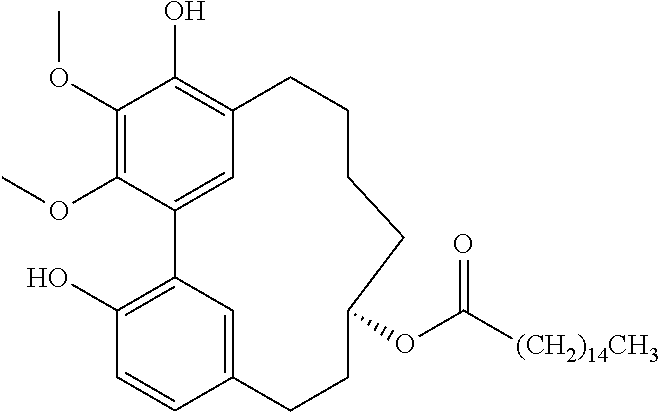
C00016

C00017
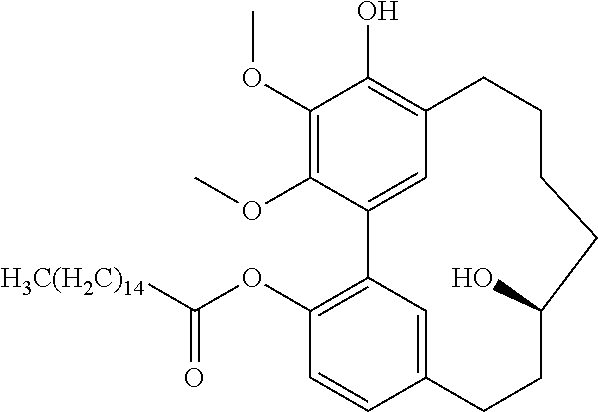
C00018

C00019

C00020
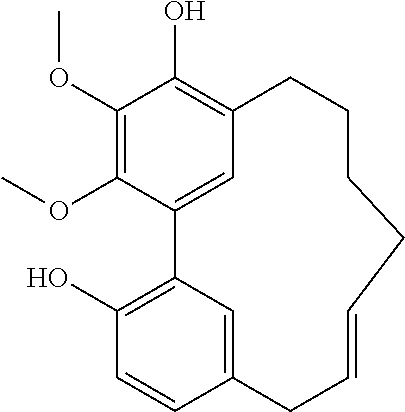
C00021
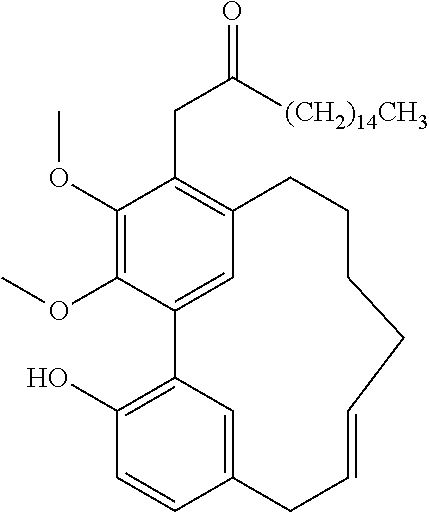
C00022

C00023
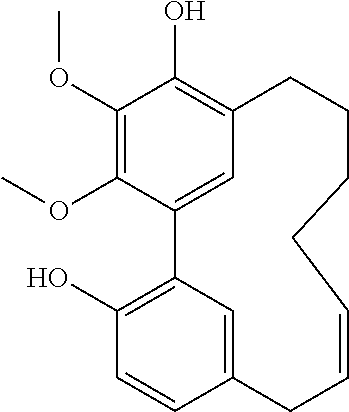
C00024
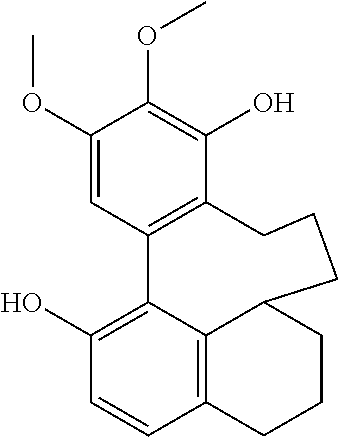
C00025

C00026
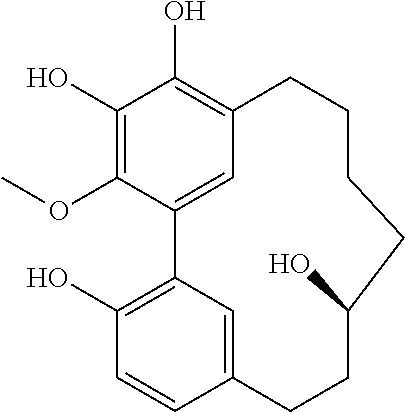
C00027

C00028

C00029
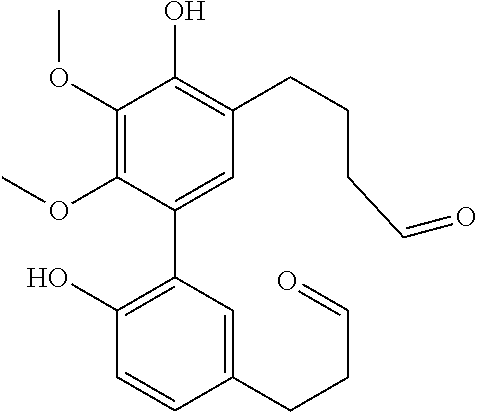
C00030

C00031
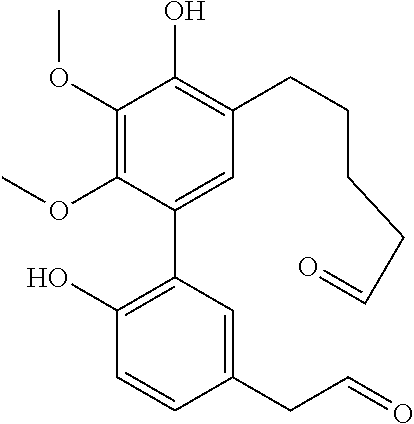
C00032

C00033
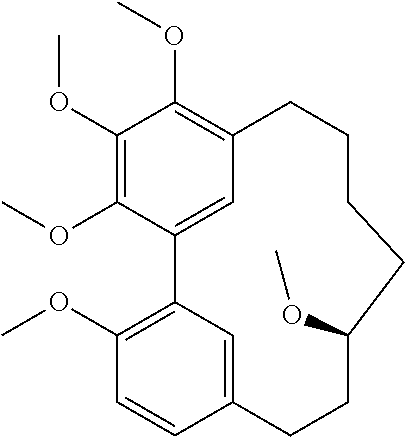
C00034

C00035
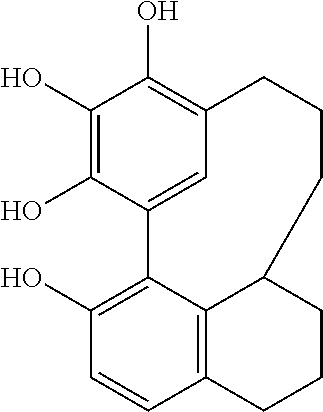
C00036

C00037
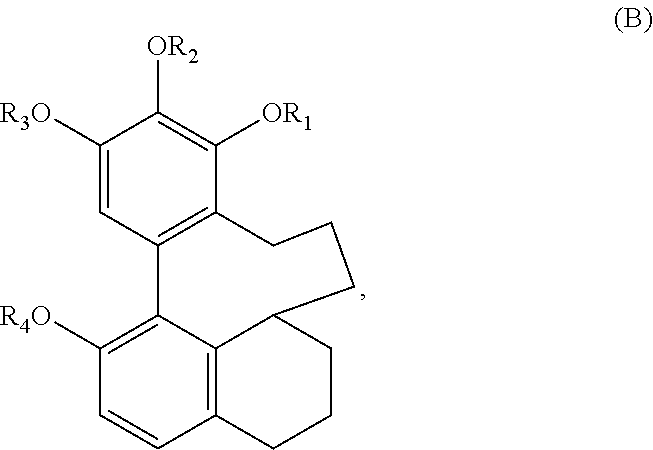
C00038
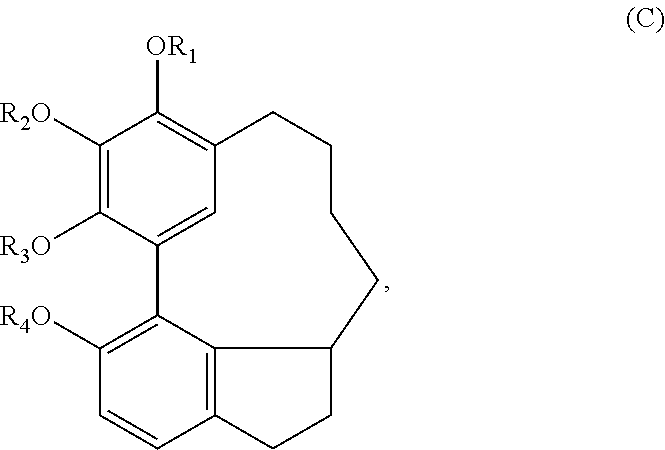
C00039
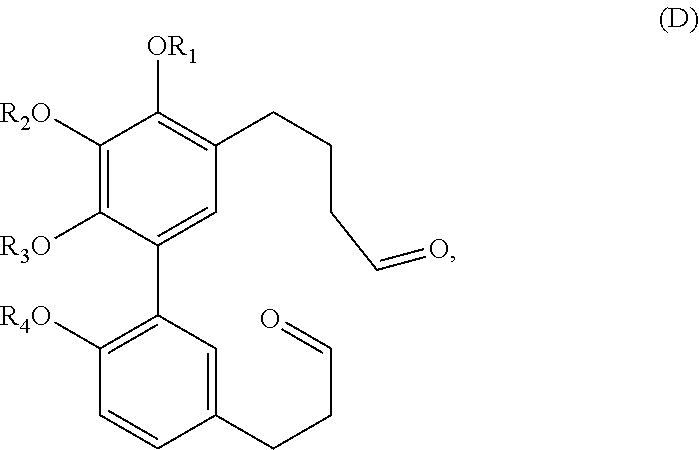
C00040

C00041
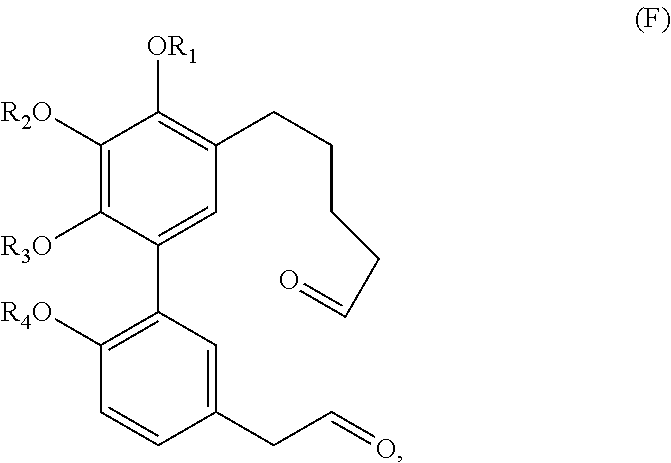
C00042

C00043

C00044
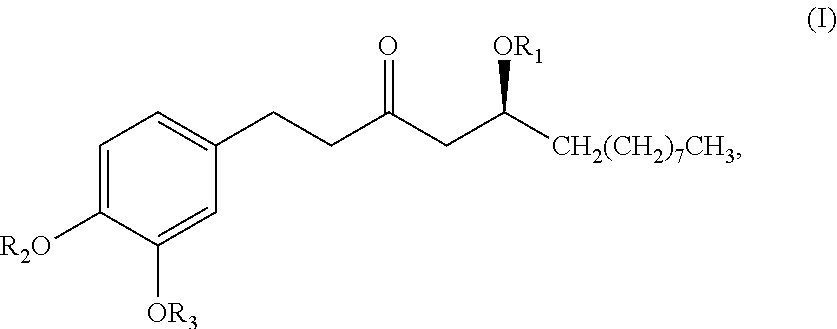
C00045
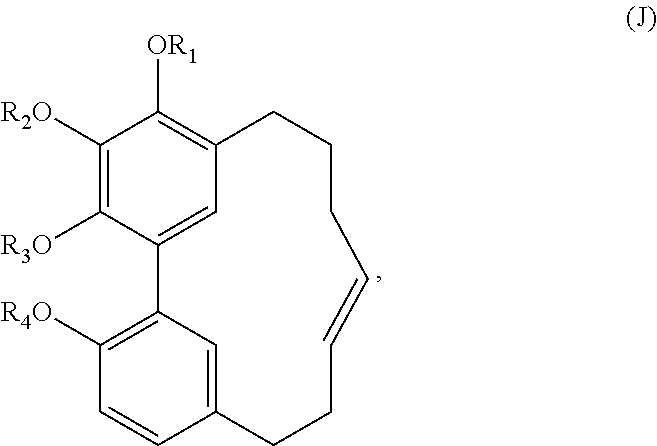
C00046

C00047

C00048

C00049

C00050

C00051

C00052

C00053
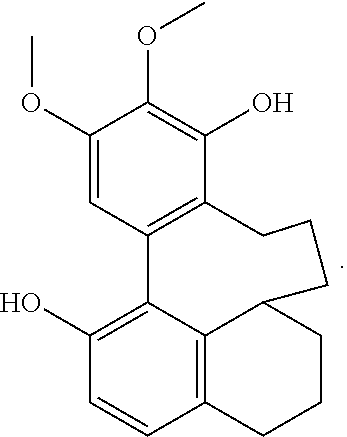
C00054
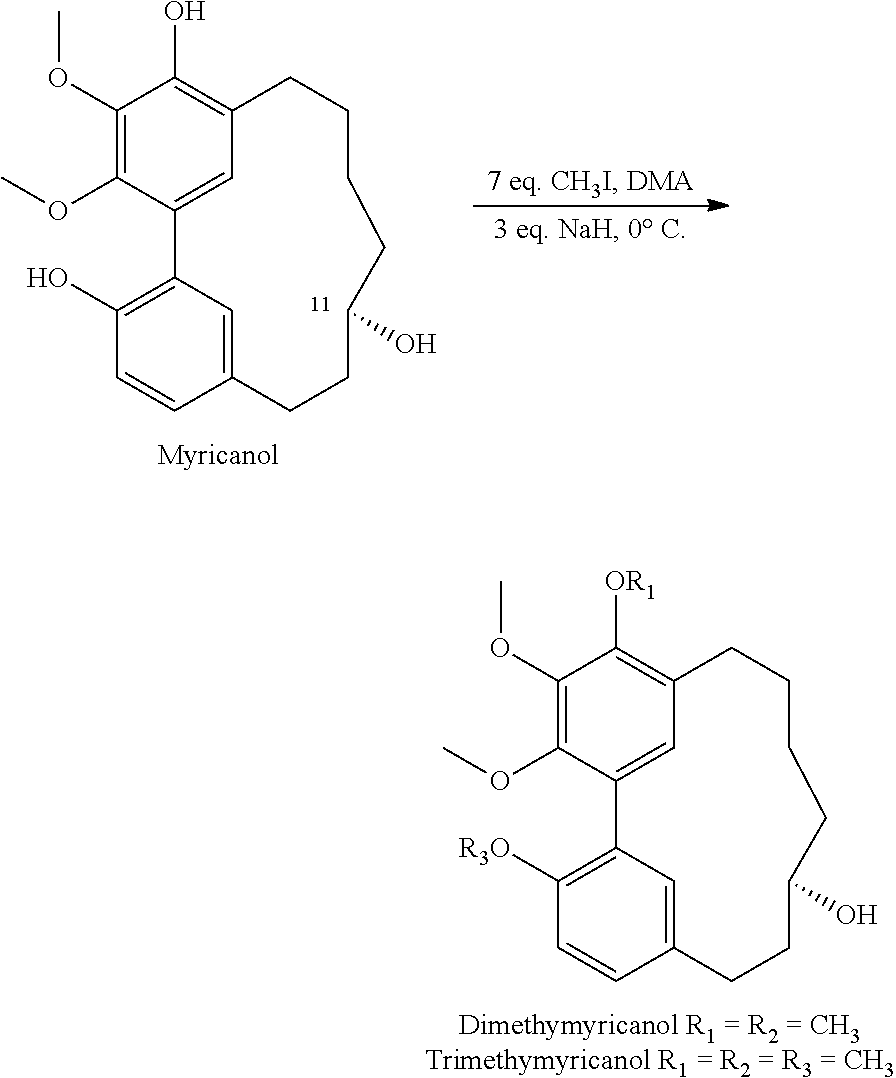
C00055

C00056
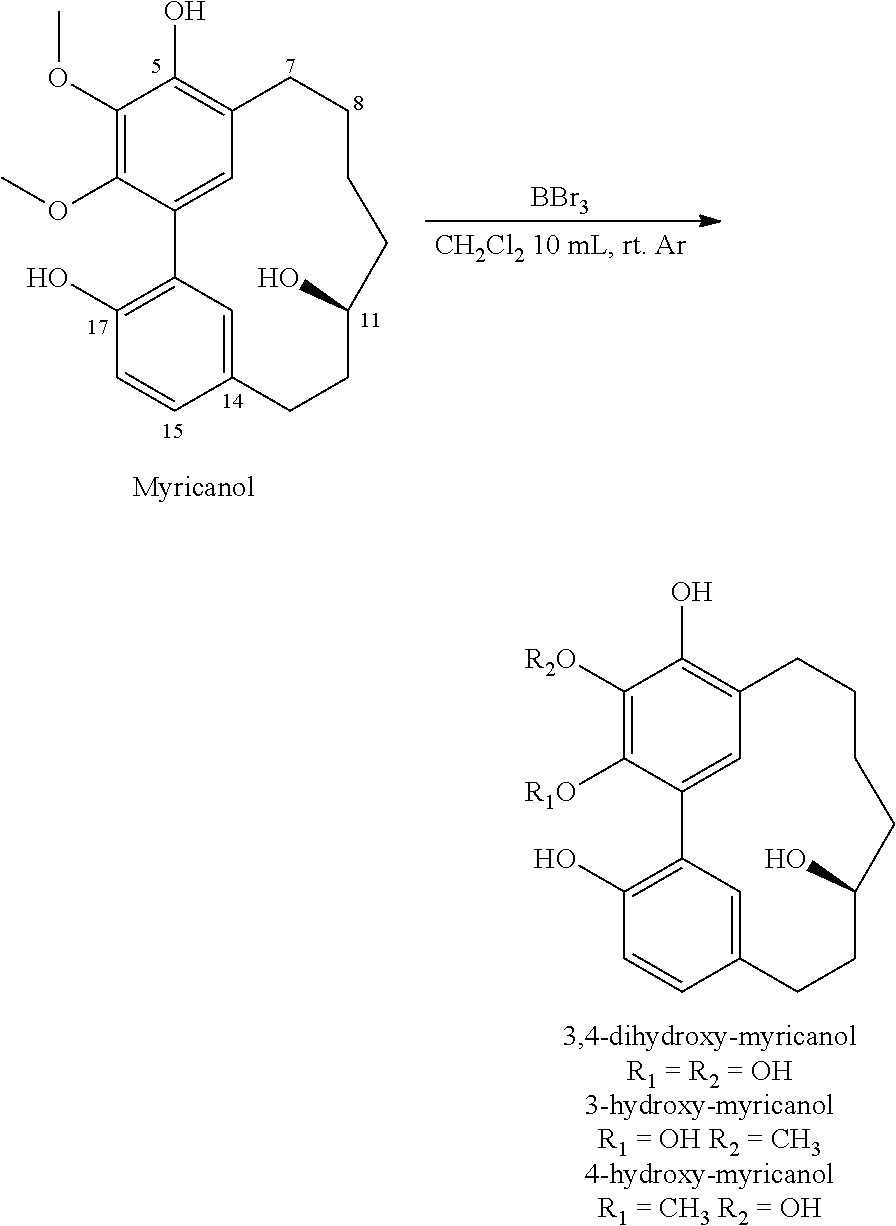
C00057
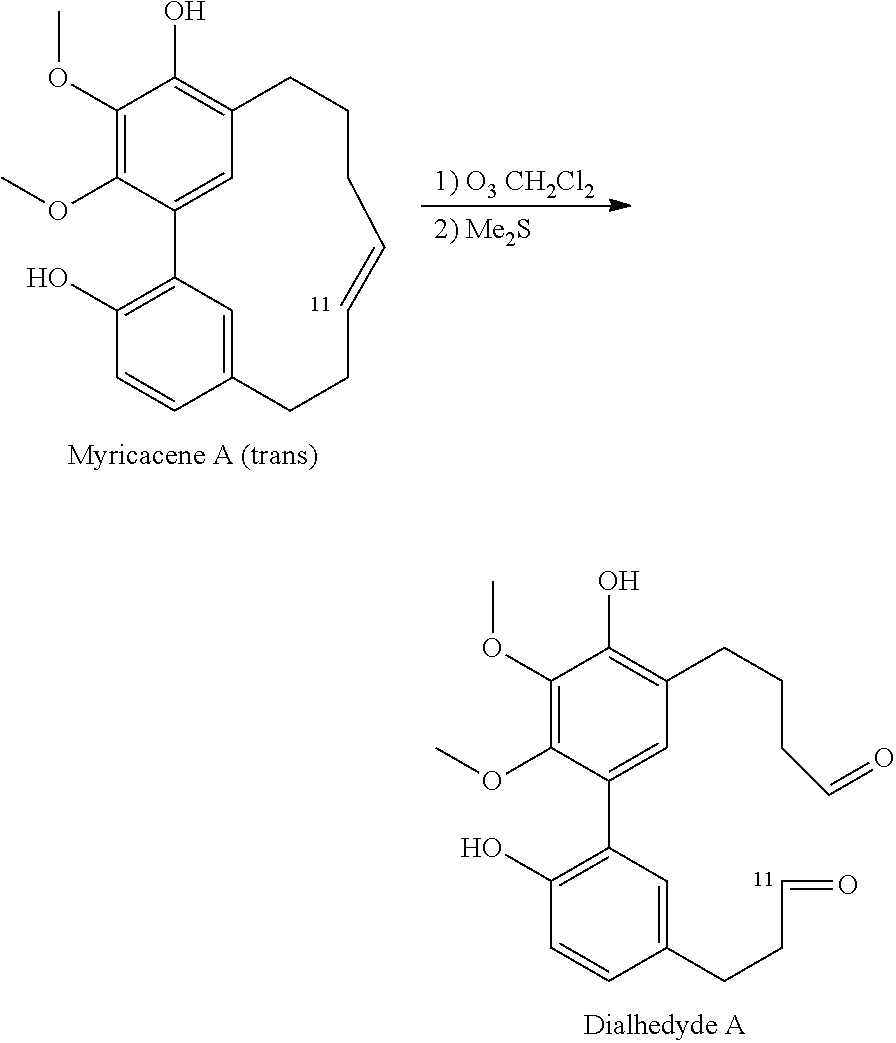
C00058

C00059
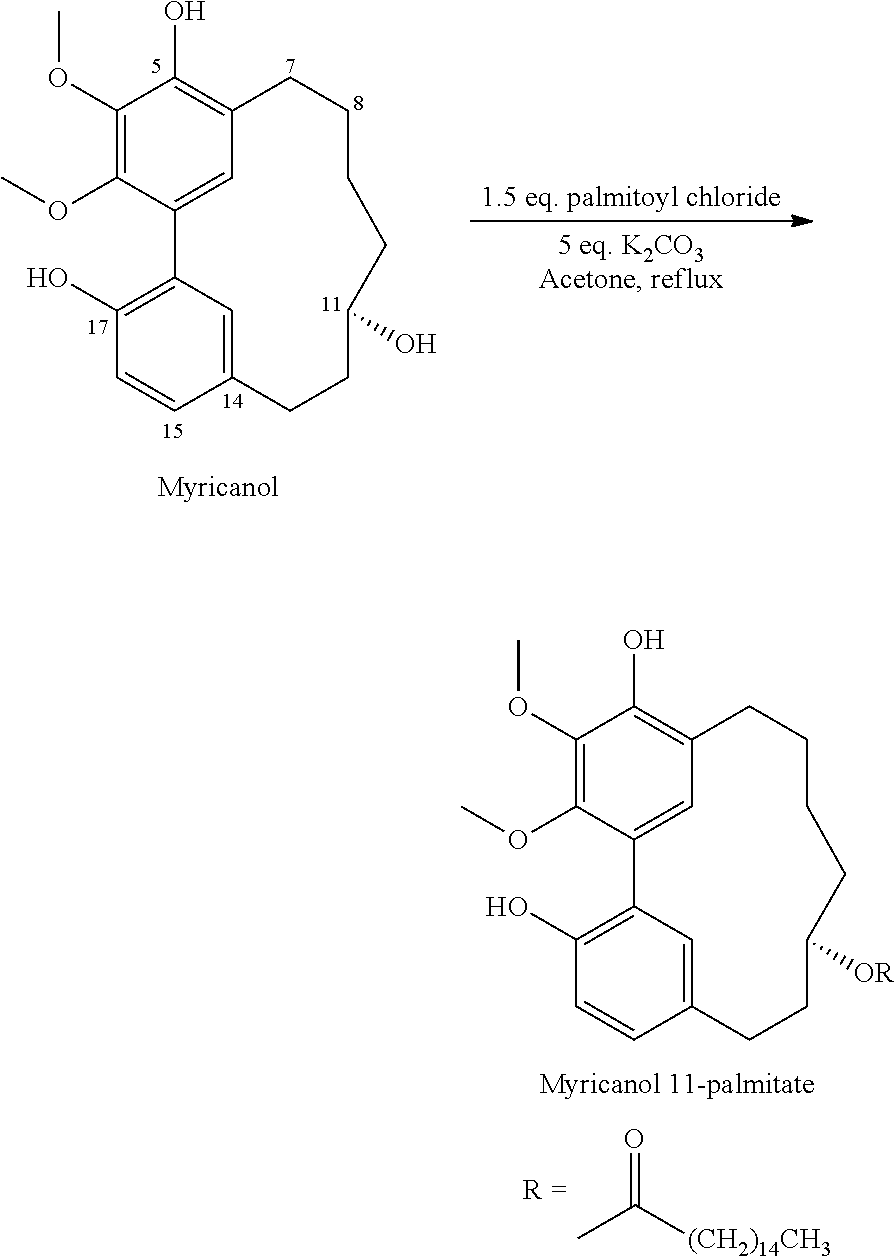
C00060
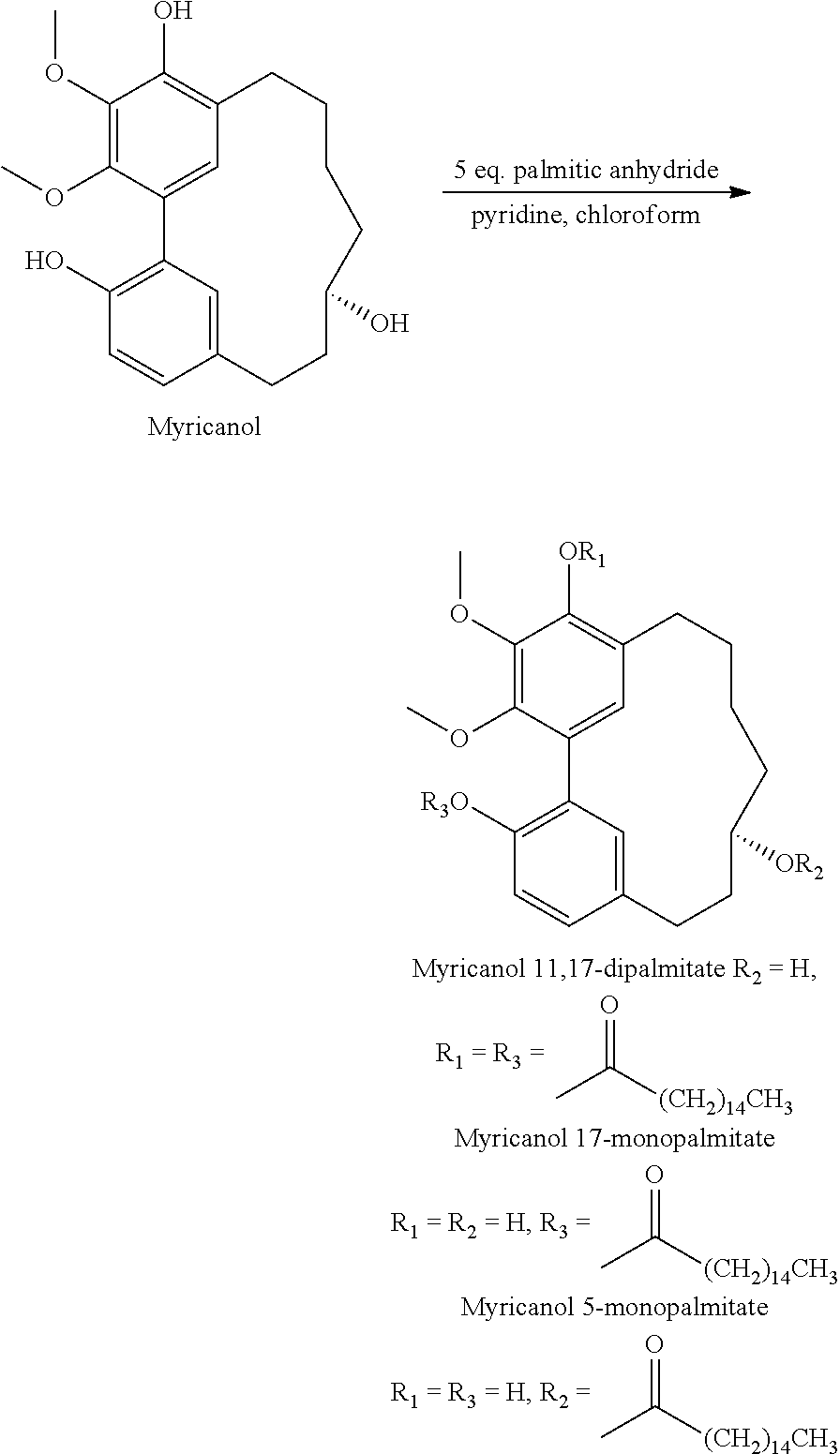
C00061
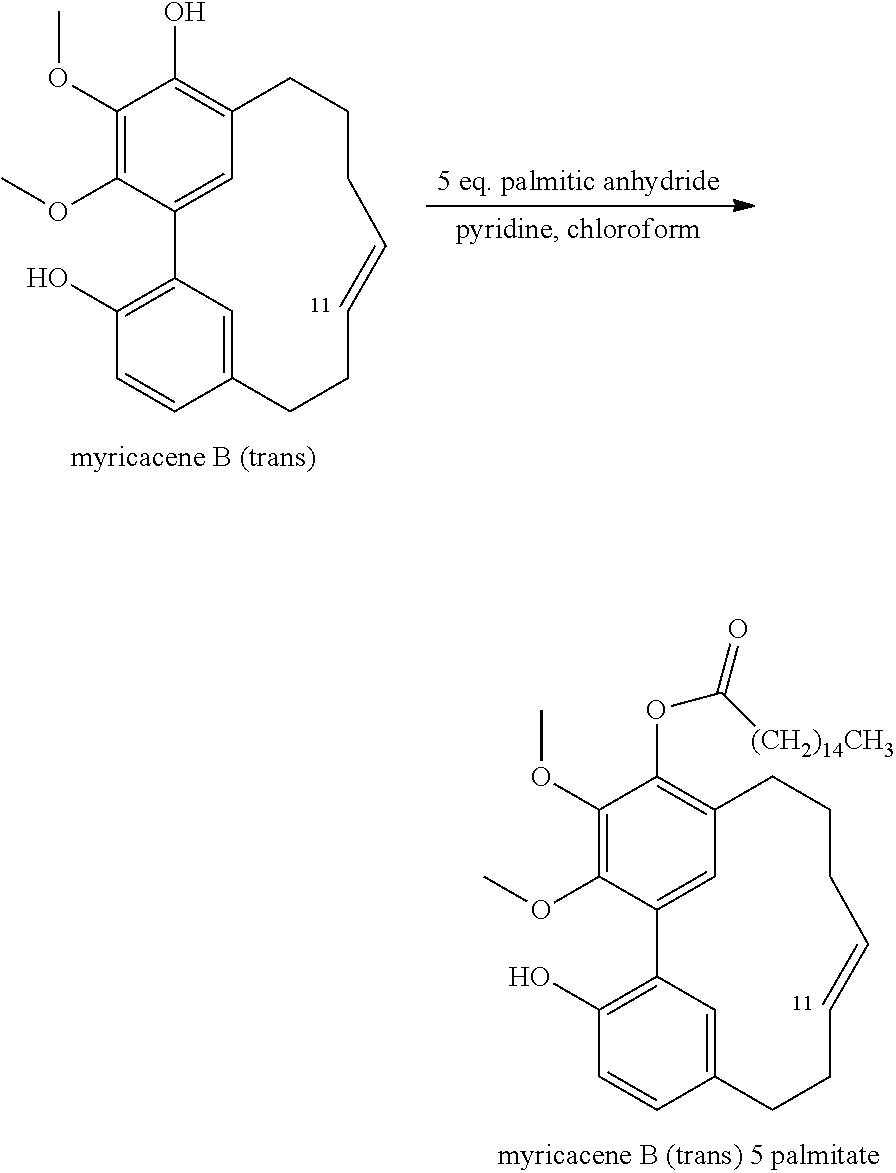
C00062

C00063
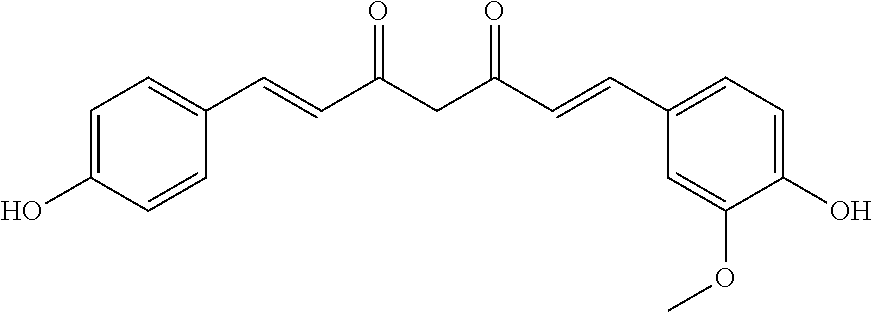
C00064

C00065
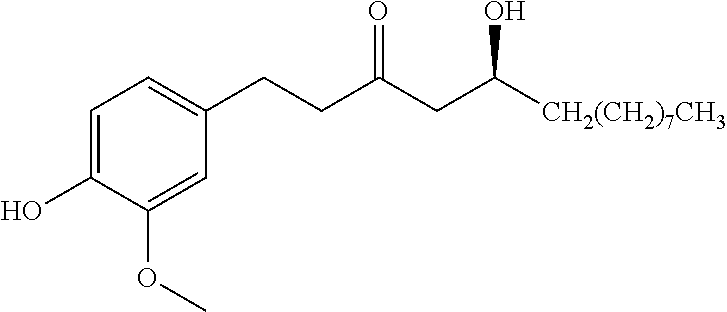
C00066

C00067

C00068
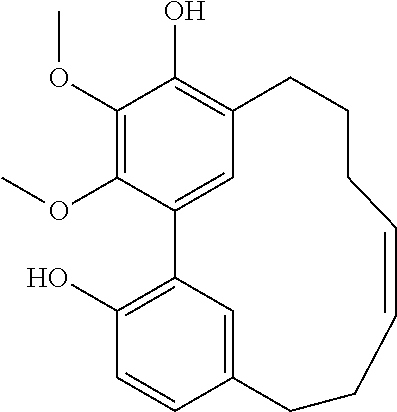
C00069

C00070
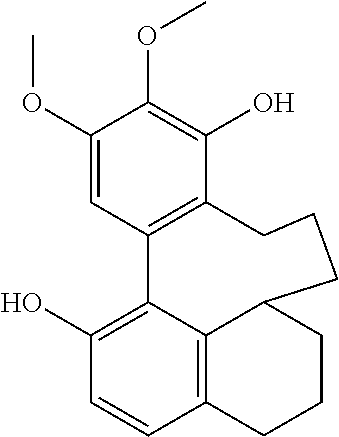
C00071
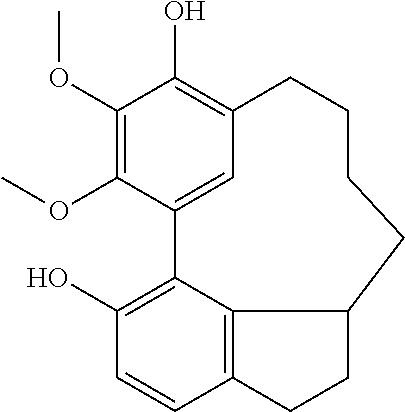
C00072
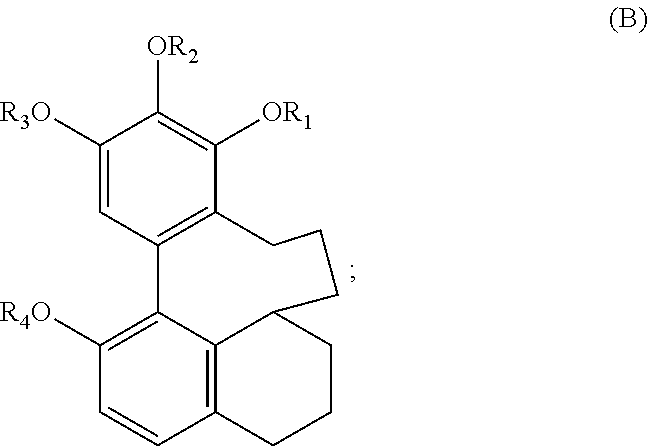
C00073

C00074
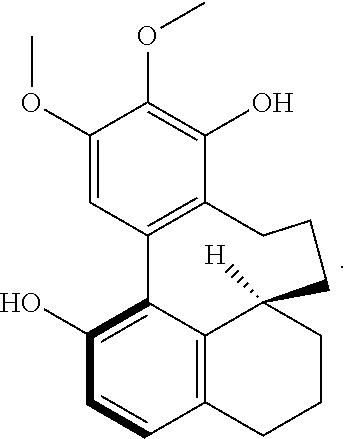
S00001
XML
uspto.report is an independent third-party trademark research tool that is not affiliated, endorsed, or sponsored by the United States Patent and Trademark Office (USPTO) or any other governmental organization. The information provided by uspto.report is based on publicly available data at the time of writing and is intended for informational purposes only.
While we strive to provide accurate and up-to-date information, we do not guarantee the accuracy, completeness, reliability, or suitability of the information displayed on this site. The use of this site is at your own risk. Any reliance you place on such information is therefore strictly at your own risk.
All official trademark data, including owner information, should be verified by visiting the official USPTO website at www.uspto.gov. This site is not intended to replace professional legal advice and should not be used as a substitute for consulting with a legal professional who is knowledgeable about trademark law.